Caroline Leavitt's Blog, page 16
November 26, 2018
Love books, reading, writers? The Book Report Network has been a best friend to writers (I love them) and readers for so many years and they are expanding. Come and help them on Go Fund Me!
Who doesn't adore The Book Report Network and Carol Fitzgerald? This is from Carol and she cna say it all so much better than I can. I just donated and you should, too.
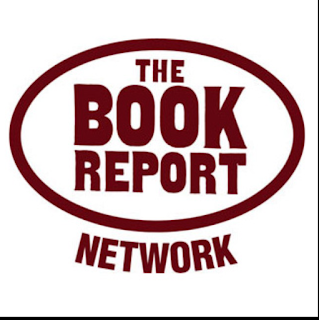
Over the last 22(!) years, we have built a loyal audience of more than half a million readers across the country via our websites --- Bookreporter.com, 20SomethingReads.com, Teenreads.com, Kidsreads.com and ReadingGroupGuides.com --- and our well-read newsletters. Our goal every day is to connect readers with the books and authors they love.
After very early rounds of angel investor funding, all of our expansion plans have been self-funded. Today, we find ourselves at a point where we need additional support to expand, so we are reaching out to the publishing community to ask for help. Our plans outlined below include:
* A Totally New and Modernized Network of Websites* A Bookreporter Podcast...with an Ear Towards a Series of Podcasts* Support for Live Events
We have reached audiences of all ages who share a love of reading. From features like Sounding Off on Audio and Word of Mouth on Bookreporter.com, What’s Your Book Group Reading on ReadingGroupGuides.com to curated lists like the Ultimate Reading List and Guy-brary on Teenreads and our Series feature on Kidsreads, we have successfully delivered relevant and entertaining content.
We have launched a GoFundMe campaign (www.gofundme.com/help-the-book-report-network-expand) with a goal to raise $100,000 by December 31st. I would be so appreciative if you would consider a contribution! I am thankful for any amount you can give. If you are able to help, here is our GoFundMe page.
The Book Report Network’s Expansion Plans
An Upgraded Network of Websites We plan to move our present websites to a WordPress multi-site platform (which is a big project!!). After a months-long planning process, we have identified the outside developers we want to work with on this project. A redesign will mean that we can implement ideas both new and overdue: • Our websites will be responsive across all devices, easily accessible from anywhere.• We will improve search and internal functionality to give readers new ways to discover books.• We will offer new opportunities for sharing content, and for readers to note the books that they want to read.• You'll see better, fresher layouts with more visuals, giving us the opportunity to showcase books and authors more vividly.• We’ll be able to present more and new content offerings on all of our websites, including a top-to-bottom refresh of 20SomethingReads.com.Important Note: Our websites currently are built in Drupal 6, which was the platform of choice when we started our last redesign back in 2010. Drupal 6 is no longer supported. This upgrade is a necessary change, not an indulgent redesign. Without it, we are restricted in functionality and speed of content delivery. This has been frustrating for us, and from the emails we get, we know it is for our loyal readers as well.
A Bookreporter Podcast...with an Ear Toward a Network of Podcasts Digital audio is exploding, and our readers are ready to listen. In fact, they have already begun to share ideas on what they would like to hear from us. We’ll start with a Bookreporter podcast, hosted by Carol Fitzgerald, where she will interview authors and talk about books in a lively format. Also, she’ll host conversations with our reviewers, many of whom have strong followings on our websites, and other guests. We already have a producer lined up and are finalizing plans for a show that will have broad appeal. Carol is known for her informative and entertaining interviews at conferences, reader events, industry panels and book festivals. The opportunity to share author interviews, as well as the kind of book information that we know readers across the country want to hear, is a natural expansion for us. Of course, we plan to drive traffic to our websites from the podcast.We already are thinking about the next step --- to expand our reach --- with a series of podcasts for the rest of the brands in our network.
Support for Live Events Carol has been a guest speaker, moderator or presenter at events across the country, including book festivals, and library, bookstore and book group presentations (among them Book Expo, the Miami Book Fair and the Morristown Festival of Books). In 2019, we will host the Book Group Speed Dating Session at Book Expo for the 8th year; prior years have had 200+ attendees at no fee to either participants or presenters. Going forward, the plan is to increase the number of these programs.
Grateful for Your Support! Help fund our expansion so that we may build upon our already strong foundation and deliver what we need to do to grow and build our audience! Contributions at any level are graciously appreciated. We accept any and all support to take this huge next step.
Published on November 26, 2018 12:56
November 19, 2018
Can family estrangement ever be a good, healthy thing? Yes says Harriet Brown in her exquisite memoir, SHADOW DAUGHTER.
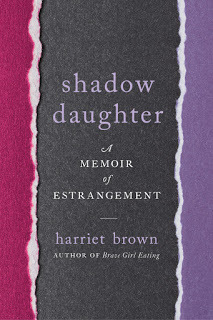
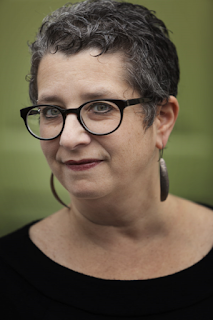
Harriet Brown writes about the essential issues--you know, the things that haunt us so much that sometimes we fear even thinking about them. And she does it beautifully. She's the author of BODY OF TRUTH, BRAVE GIRL EATING and the anthology FEED ME (I wrote a toxic ex who wouldn't let me eat, but I couldn't leave him because I was grieving someone I really loved.)
Shadow Daughter is especially gorgeous and relevant during the holiday season, because it asks, how can we deal with family relationships that no longer work and that hurt us? Can estrangement actually be healthy? I'm not the only one to go nuts for this brilliant book. Take a look at the praise:
“Harriet Brown has written a very personal book about a difficult thing. Shadow Daughter is candid, thoughtful, complex, and well-researched. It will be useful to anyone trying to understand what went wrong.” —Audrey Niffenegger, author, The Time Traveler’s Wife
“Digging deep into a subject so taboo we didn’t even know it was a subject, Harriet Brown has gathered many painful tales of estrangement, but it is her own personal history that gives backbone and emotional power to this courageous, thorough work.” —Mary Norris, author, Between You &
“Brown's research and anecdotes help readers understand the many dilemmas involved in engaging in estrangement and offer support for those balancing on the edge of making this life-changing decision.” —Kirkus Reviews
Thank you so much for being here, Harriet!
What was the moment when you felt haunted into writing this memoir?
On some level I’ve been waiting to write this book for years. Long before my mother died, even before our final estrangement, I knew I wanted to write about our relationship and about the larger issue of family estrangement—for myself, for the catharsis I hoped it would bring, and for other people who might be going through similar experiences and who felt alone with those feelings and problems.
Do you feel that you personally changed in the writing?
One thing that changed for me in writing this was that I had to—chose to—articulate to myself and on the page some of the inchoate thoughts and feelings that had been swirling around in my head for my whole life. Another thing was that I got to connect with so many other people who had struggled or were struggling with estrangement, and that was intensely instructional and liberating.
Did anything surprise you in the writing?
What surprised me most, and continues to surprise me, is just how common estrangement is. Pretty much everyone I’ve ever talked to about it has mentioned a similar issue in their own family. Surprisingly often they bring up core relationships—a mother or father they don’t speak to, a brother who doesn’t speak to them. And just as often it’s the first time they’ve talked to anyone outside their immediate family about it. There’s so much stigma and shame around estrangement, and that isolates those of us who have been through this.
Why do you think the mother/daughter bond is so difficult, in particular? Do you think cultural changes have made it more difficult or less?
I think all of these close bonds are difficult. Fathers and sons, mothers and daughters—we are social animals who can’t live without these close relationships but sometimes can’t live with them either.
We don’t get to choose our families, and it’s actually surprising that sometimes being estranged actually frees you and makes for a better life. But guilt, grief and regret still hang on. How do you learn to live with that?
What a good and tough question. I think everyone must find her own way to work through these issues. For me it took a lot of repetition and years of very good therapy to help me understand on a deep emotional level that a) I was better off estranged and b) guilt just kept me enmeshed in a toxic situation. I do feel guilt and regret on occasion, of course, like any other human being J, but they don’t plague me the way they used to.
What's obsessing you now and why?
What’s obsessing me now is a story I hope will be my next book, which is about families that use cannabis to help medically fragile kids. It’s a story about love—the love of families that go against the medical mainstream and risk not just censure but jail to help their children. These are kids and families that deal with unbelievable obstacles and unimaginable situations. I’m deep in the reporting for that and it’s intense and life-changing.
Published on November 19, 2018 09:12
November 13, 2018
A marriage. Grief. Running toward something new. Jaclyn Gilbert talks about her incandescent debut novel LATE AIR (great title, right?)
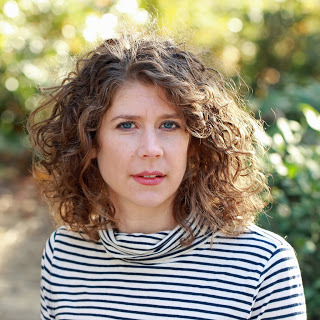
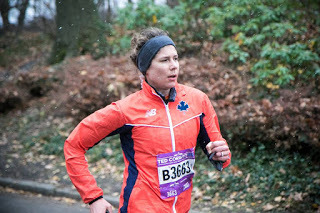
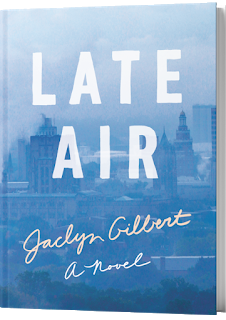
Come on, don't you just love debuts? The notoriously cranky Kirkus Reviews does, calling LATE AIR, "elegiac...a carefully plotted and cautiously hopeful novel about the ties that outlast marriage."Jaclyn Gilbert received her MFA from Sarah Lawrence College and BA from Yale University. She is the recipient of a research fellowship from the New York Public Library, a contributor to the Bread Loaf Writers' Conference, and her work has appeared or is forthcoming from Post Road Magazine, Tin House, and Lit Hub.
I'm so jazzed to host her here! Thank you, Jaclyn!
I always want to know about process. I understand that this brilliant novel was a short story first. (That was my experience, actually, with my first novel!) How did you transform it into a novel? How difficult (and exhilarating) was that?
A very good question that goes right into the heart of the process. I started this novel as a story for my first fiction writing workshop as an MFA candidate at Sarah Lawrence College. Around my class schedule, I began a habit of running along the Bronx River greenway. One October day, I ran past a park golf course and wondered about the possibility of a stray ball hitting me or another runner nearby. I thought suddenly of all my years of college running on the Yale campus golf course, and how never once I had considered these risks. Something about the terror of that hypothetical asked me to sit down when I got home to try and write it as a scene. I felt something lock in through the moment of writing—something about my past experience intersecting with my imagination as my pen scribbled over the page. When I shared the work with my class, I received several emails from readers wanting to know what happened—asking me what my plans for the story were. I began to consider the character of Murray as part of a larger work, or one that circled his own journey into his past around the inciting incident of a golf injury his star runner, Becky Sanders
At the time, I knew very little about traumatic head injury, but began reading as much as I could on the topic, studying regions of the brain, and the speed and distance required for a golf ball to incur severe damage. I also knew that the narrative felt too confined to the coach’s experience of his athlete’s accident, and I wanted to weave in a female perspective that could look at larger questions of grief and recover. At Sarah Lawrence, I had the good fortune of working with David Ryan as my thesis advisor, who was the first person to get me to think deeply about what stories Murray might have repressed from his past. He helped me think of trauma as an echo split into tiny fragments that could erupt out of the coach when triggered by a sound, smell, or image. I spent weeks meditating over the color and shape of Becky’s wound, and through drafts of endless free writing, I began to see where its echoes might resurface in the present narrative, through the blue of a swimming pool for instance, or the color of the sky around dusk, and I began to imagine a deeper trauma running parallel to that of Becky’s. I began to imagine Murray’s runners as extensions of the daughter he never had, and this understory became a constant source of interrogation for me. I have never had a child myself, so I began immersing in research around what it might feel like to give birth to a child in my late thirties. Over time, I was able to develop the character of Nancy, someone whose literary and perfectionistic neuroses I can identify with, as much as I can Murray’s obsession with running and the body. Transforming this story into a novel was very much a process of trying to marry and reconcile different aspects of myself through characters that were as much parts of me as they were points of departure through their lived experience as new parents.
Their own opposite journeys around grief, or the opposite ways they needed to heal in the aftermath of an unfathomable loss, in many ways allowed me to grieve the greatest loss of my own past. My father and I no longer have a relationship, and my own struggle to redefine my relationship to running as not something I need to use to control and order my life to the point of injury, but as something that allows me to be present in my body and more compassionate toward myself as a whole, ultimately fueled the writing and recovery process driving this book. So much of Late Air’s emotional arc required questioning what it means to grieve as a means of survival—and what it means to forgive oneself and those you love in the process. The opposite nature of my characters’ journeys also helped move the plot forward; while I knew they each had to find their own way through time and memory back to one another, I didn’t know how they would, or how many pages it would take. My revision process was about constantly finding that balance, shaping their paths in a way that felt most organic to their humanity, and the trauma that fractured their lives, but also joins them together at the end in a search for lost time, love, and wholeness.
One the things that moved me the most is the idea of how marriage changes—how it can grow. I always used to think that the best relationship was when it was new and passionate and sparking with excitement, but after 25 years, I’ve discovered the best, truest, deepest love is when you’ve been through so much together, when you can actually learn to see each other. Even so, I was surprised and moved at how the novel ended. Did you always know it would end that way?
I think my answer to this question is embedded in my answer to your last one, but in short, I suppose I didn’t always know the novel would end this way. I think this is true largely because it took me time to understand the scope of the story I was trying to write. At first, I thought it was the story of one coach and his runner, but when I began layering in his past and realized it was really a story about a marriage and the death of a dream, I began to see more clearly where it could end. I vividly remember the day an image of the ocean came to me, with a couple sitting on a bench looking as gulls dove in and out for fish, and something about that image felt right. I kept the image vaguely in my head, writing toward it as best I could, and in time, images of blue and water began to recur. In this way, I began to see that blue was both a source of pain and healing for my characters. That the ocean of breath, or the life force that is taken from Nancy and Murray, is also the thing that they share and are looking for through running. I think it was this image that allowed me to imagine Nancy becoming a runner toward the end of the novel too—even though it is the last thing she imagines herself becoming after she blames Murray’s obsession with running and coaching as the reason behind their failed marriage.
I am convinced that this image of the shared void between Murray and Nancy as a body of water helped me find the ending most completely, to explore all of its reverberations through the color blue in Late Air as a dual means for learning to sit inside our wounded bodies, as well as transcend them through a shared experience of love and loss in the end.
I was also fascinated with how you wove the past story in with the present story, the story of Nancy and Murray’s marriage in with their respective careers. For me, it’s always so difficult to know what to put in and when. How did you do such alchemy?
One of the most helpful tools I learned was through my thesis advisor, David Ryan, who told me about kernels and satellites. In this craft idea, you decide which thing had to happen in your book to make it the story you are telling, and you decide that, you have to be very selective about which details, scenes, and images will be most effective at circling that core moment or truth. Once I realized that I was telling a story about two traumas, I had to think about all of the ways those two traumas were working in echo; I had to figure out which key aspects of Nancy and Murray’s characters would be most effective in establishing their love for one another and their hope for their first child, as well as reveal all of the ways that dream had been shattered through the past and present narratives. I would say that none of this came easily. So much of it relied on telling the surface stories of both Murray and Nancy’s lives, both apart and together, and then deciding all of the ways they overlapped, and what scenes would allow me to most effectively create depth and sub-text around what I know, or at least think I know, to be true about them. This whole process required a lot of cutting and reshaping. It required a lot of patience and diligence in trusting that layers would be able to weave themselves together through the magic of memory, imagination, and time—or through the process of revision itself, since it allowed me to deepen my connection to the story I was trying to tell, allowing the story to form its own memory and pool of subconscious I could call forth in moments of intensive rewriting.
I know you were a runner yourself, which acts as a superb metaphor in the novel i.e. what are we running from and why aren’t we running to? Can you talk about this please?
In writing this book, I realized that running is a double-edged sword. In one way, it can be something that allows us to run away from our emotional pain, as a practice that allows for the adrenaline rush, or the high, that can let us escape what we don’t want to feel or re-experience. For me, it was my father’s critical words when I was a teenager. The last thing I wanted to feel or hear were these words, and running allowed me flight from the idea of the woman I feared becoming in his eyes. Running in this way was a means to control my body, to focus on racing times and my weight instead of the question of my father’s love, which proved to be conditional when I was in college. The conditionality of his love set in motion a grieving process that I think Late Air seeks to reconcile or find peace with. I realized that my writing process was very much tied to my identity as a runner; I realized I needed to find a way to affirm myself through the experience of writing, as much as I did in my experience of running, so that both writing and running could serve as paths of salvation, and not destruction.
In this way, the book became about running toward what I was most afraid of feeling, so that I could ultimately transcend and heal from that loss. The death of a child is, I think, in many ways a metaphor for the death of the child in me, or the child I felt my father couldn’t love unconditionally in the same way I was trying to find a way to love myself unconditionally in this life. Nancy’s journey took the shape of my own through her own desperate search to sit in her body again. Her running chapter offers a source of healing that can redirect her journey as one that seeks not to forget her pain, but that which accepts it and lets it go so that she can forgive herself as a wife and mother. It is what allows her to have compassion for Murray by the end of the book. Through Nancy, I ultimately found greater compassion for myself; all the long runs I took while writing this novel helped me learn to sit in my body just as she had to; Nancy also taught me to sit through the most uncomfortable aspects of the writing process. Rather than flee the scene, I had to write through conflict, feel what my characters were feeling in their bodies in order to make their experiences most whole.
What’s obsessing you now and why?
I am obsessed with a lot of things, I would say. But one thing I realized I am particularly obsessed with is the psychology of repression: how we can spend our whole lives repressing a given story or feeling like a secret that leads to a continual cycle of trauma. In our current political climate, I often think about how many stories have been repressed through the whole of human history to give priority to other stories that do nothing but incur further violence and destruction. I feel desperate to understand why we may repress what we do because we are men or women, husbands or wives, sons or daughters, parents or children; I realized that it is the fact of binaries that lends for a continual repression of otherness that fails to recognize the ambiguity of our humanity. As a writer, I realized I want to do more to honor that ambiguity, especially as it relates to societal norms, and I want to find a way to show that moral ambiguity is far more interesting than absolutism’s attempts to define our morality as either good or evil. In my writing, I hope to make the experience of reading more about the process of asking questions and trying to see things from as many vantage points as are possible, so that we can begin to believe in the multiplicity of truths, and celebrate the shared experience of not being able to pinpoint a single answer.
I think you’ve allowed me to get at the heart of what I am trying to write. Thank you! I think my last answer to the great human question is that to find patience and love for ourselves is to find it in others, and as a writer who is still very poor at practicing patience, I am determined that each day I try to be more patient, I might inspire others to do the same—as a means of becoming less reactive when confronted with fear and conflict. As a writers and readers, my hope is that in an age confused by the competing demands of technology, consumerism, and media, we can still find time to step back and observe how beautiful it is we are all here together: alive.
Published on November 13, 2018 08:51
November 9, 2018
The extraordinary Sarah McCoy talks about MARILLA OF GREEN GABLES, her brilliant new novel based on a side character of the beloved Anne of Green Gables.
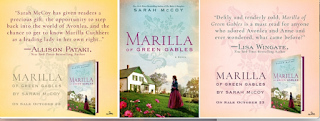
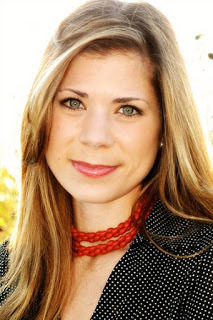
Sarah McCoy is one of those people you automatically fall in love with. We did an event together and I never had so much fun in my life. (Case in point: Sarah and Jenna Blum and Jane Green and I all planned a writers pajama party in a hotel, and even though it never happened, we all acted as if it had.) Sarah's also a wonderful, wonderful writer, and her new book MARILLA OF GREEN GABLES explores one of the characters of one of the most beloved books around, Anne of Green Gables.
Sarah is the New York Times, USA Today, and international bestselling author of The Mapmaker’s Children; The Baker’s Daughter, a 2012 Goodreads Choice Award Best Historical Fiction nominee; The Time It Snowed in Puerto Rico; the novella “The Branch of Hazel” in Grand Central; and Le souffle des feuilles et des promesses, a French exclusive title.
Sarah! Thank you for being here!
It’s always fascinating to me what makes a writer decide that a particular novel is the book they need (not just want, but need) to write now. What was it like for you when you started Marilla? What made you decide to revisit Anne of Green Gables? And what made you decide to center on Marilla?
I actually hadn’t thought to write Marilla until about two years ago. At the time, I had just completed another novel called Pride and Providence, which sold internationally. I was in the process of changing North American publishing houses. While getting to know potential new publishers, the executive editor at William Morrow/HarperCollins gave me a call. She basically asked me to share a book a book idea that excited me to write next. No strings attached. No Show me the first 100 pages or What have you been researching for the last five years? The door was wide open. All she asked was: What makes your heart sing to write? I’d never had an editor take an active role in the brainstorming part of a book’s development. It was refreshing—and inspiring.
So I followed her instructions and the first idea that came to mind was… Marilla Cuthbert. I’d always been fascinated by her as a prominent yet only partially known character in my beloved Anne of Green Gablesseries. I grew up with the books and was obsessed with everything related. I dreamed on the characters long after I finished reading. Particularly pertinent to writing this book, in Chapter 37 of Anne of Green Gables, Montgomery drops this juicy detail on us and then keeps on walking with Anne Shirley.
What a nice-looking fellow he is,” said Marilla absently. “I saw him in church last Sunday and he seemed so tall and manly. He looks a lot like his father did at the same age. John Blythe was a nice boy. We used to be real good friends, he and I. People called him my beau.”Anne looked up with swift interest.“Oh, Marilla—and what happened?
I can’t tell you the hours I spent dreaming on the answer to that, what happened, Marilla? I guess you could say I’ve been writing this book my whole life if one was to pinpoint that lightning-to-brain moment of curiosity. And like being fire-bolted by the heavens, this was a novel that somewhat terrified me to write. Green Gables is sacred, after all. But my love for Lucy Maud Montgomery’s legacy usurped my fears. So I went into the writing with the goal to honor that and give Marilla the spotlight that I felt Montgomery would approve.
There’s something about that word “spinster”—which of course was a terrible thing to be in the 19th Century, and now is no more terrible than saying you are left-handed. But what I loved is that you took that label and made Izzy the one who pushes your heroine out into the world, and even makes Marilla realize that there are other lives than the traditional one that she can choose. Can you talk about this please?
You know, Caroline (and you do because you know me well), I’ve never been a person who was content with living within a box. Parameters, molds, and model criterion of perfect humanity have always sat uneasily in my gut. Don’t get me wrong, I'm no rebel for the sake of rebellion. I understand that rules and protocol can be a stabilizing, good framework. A farmer must respect nature’s laws of seedtime to get the harvest. A bird must respect gravity to fly. I get it. But I also think that too often, we declare social laws that really have no credence outside of making one set of people feel accepted and making another feel rejected. What is the ideal family anyhow? Mother + father + 2.5 kids + an oh-so-happy Labrador in a 5-bedroom, suburban Mc-mansion on the cusp of a shining metropolis? Does that family formula make us say, “Oh, yes, they must be good people. They must live good lives. Mark them down in the annals—that’s the model.”
What if your life’s picture doesn’t look like that? Is it therefore not worthy of praise, of being ‘Liked’ on Instagram, of being remembered in history? We’ve got a really skewed perspective of worth, especially women’s worth. That isn’t particular to modern times either. I think Montgomery (as a pastor’s wife) recognized it, and if she couldn’t voice her unorthodox opinions in real life, she definitely did in her fictional Avonlea. Marilla, Matthew, Anne: they are celebrated for being a beautiful, successful yet unconventional family.
That’s part of why I believe the Green Gables legacy continues to thrive. It’s about overcoming adversity and fearlessly sharing the message: “You can, too.” Unlike many of the louder messages being shouted at us from TV, radio, the Internet, etcetera, this one is shared between the reader and the page. Only there does it have a chance to seed itself. I know its capacity. I experienced it the first time I read Anne of Green Gables. It influenced who I grew to be as an adult, a writer, and an advocate of diversity.
I absolutely loved all the historical details. The writer Mary Morris once told me that in doing research, forget the dates, but look for the stories, the human drama. Can you talk about your research? What surprised you?
Out of the hundreds of cable channels, I could honestly do with just four: History Channel, Biography Channel, Turner Classic Movies, and PBS. I am a proud history geek. You can’t beat the drama of historical narratives. It’s too wild for anyone to make up! I write historical fiction because that’s what fires me up.
Lucy Maud Montgomery gave us two complicated, yet deeply lovable characters in Marilla and Matthew Cuthbert. She left an excellent literary breadcrumb trail, and I considered it a joy to follow it backwards to discover their younger selves. The most important part of doing Marilla justice was to pay attention to the Green Gables world that Lucy Maud Montgomery created. I annotated all the original series, alongside every biography I could find, including The Complete Journals of L.M. Montgomery. Montgomery wrote so many tiny, wonderful details that give glimpses to Cuthberts’ pasts. So I spent a good amount of time re-reading the first few books (in which Matthew and Marilla are featured) and recording every description, emotional response, comment, opinion, habit, routine, and preference. Then I placed them into the historical context to find the connections.
Being an American, I had to also give myself an intensive course on Canadian history. I was in touch with Canadian author Susanna Kearsley, who graciously answered my questions about the varying opinions of Canadian politics. Susanna sent me links to archives related to 19th-century political parties, particularly as the documents pertained to the issues of English sovereignty, independence, slavery, and runaway slaves from America (pre American Civil War). I learned there was far more conflict in Canada than we, Americans, recognize. It was fascinating and eye opening to see similar cycles of bitter division between citizens. I wrote this book during our own conservative versus liberal struggle in the wake of the 2016 U.S. presidential election. The historical mirrors were undeniable.
Last but not least, I spent October 2017 on Prince Edward Island island. It was important for me to walk Montgomery’s old haunts, explore the island’s historical settings, and meet with her relations that continue to thrive in Cavendish (a.k.a. fictional Avonlea). I felt quite like I was living in Avonlea, and who better to welcome me than Montgomery’s kin. George and Pamela Campbell—brother and sister cousins to Montgomery— opened their family’s home to me. They own and operate the Anne of Green Gables Museum and the Anne of Green Gables stores across the island. Their knowledge concerning Maud’s writing life and the lore of Green Gables was invaluably helpful. I was honored to receive their and the Montgomery heirs’ blessings on this book.
The past is truly prologue for the present. Your novel takes a fascinating side route to a lot of important moments, revealing them to us in new and important ways. For example, instead of writing about the Underground Railroad, you hone in on the survivors who hit Canada, and what their lives might have been like. What was your writing process like in deciding your historical timeline?
That was probably the easiest part of this book. Lucy Maud Montgomery gave me the birth and death of my characters. According to the Anne of Green Gables series, Marilla was born in 1824, and she died in 1910. She also wrote that during Marilla’s childhood, her father built Green Gables. It was a developmental time for Avonlea as an established island village. I chose to begin the novel at roughly a similar age as when we get to know Anne Shirley. I like narratives that have threads between them, and I certainly wanted to pay homage to the novel of inspiration (Anne of Green Gables).
There’s a kindred spirit link between young Anne and old Marilla. With this book, I wanted to show that a ‘spirit link’ doesn’t just work forward in time. It works backwards too and loops in unconventional ways that our limited scope of human understanding may not comprehend. Nonetheless, it exists. So we begin when Marilla is thirteen years old in 1837.
You’ve written so many extraordinary books. Does the writing change for you in book to book, or do you have a process that you depend on?
Each book process feels similar in that all my work is historical fiction. So I start in the archives, unboxing forgotten facts and memories, digging up infinitesimal details, because they always hit at something larger! I consider myself a story archeologist. (For a brief stint in college, I thought about being a real one—I even took Geology, which is about as interesting as staring at a rock. Literally.) So first came the research into the fictional Avonlea, created by Lucy Maud Montgomery, within the context of a real Prince Edward Island in a real Canada between 1830s-1860s. It was a tremendously dynamic time in the country and in Marilla's life, as you read in the book.
What’s obsessing you now and why?
Truthfully, I’m still obsessed with Marilla’s world. There’s still so much about her, about her family (the Cuthberts and the Johnsons), about Green Gables and Avonlea. That’s the thing with Montgomery’s story world: you want to stay in it! I thought I’d quenched my childhood thirst for more Green Gables by writing this book, but it seems it’s just given me a taste for how delicious the water from this well is… and I want buckets more.
<
Published on November 09, 2018 15:57
Mobsters! Brooklyn in the early 20th Century! Jewish Noir! The wonderful Thelma Adams talks about her Dickensonian new novel BITTERSWEET BROOKLYN, and so miuch more
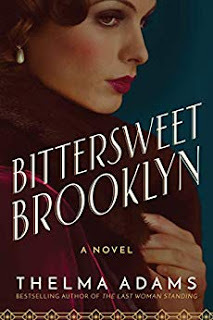
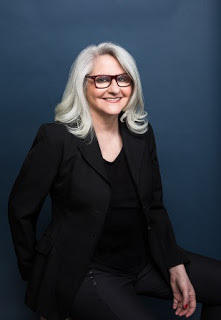 I'm pretty sure I've always been lucky enough to known Thelma Adams. Okay, the truth is, we became friends on social media because I was fan-girling her and the rest is history. BITTERSWEET BROOKLYN is as if she is channeling Charles Dickens himself. Every page crackles with life and history, and of course, Brooklyn int he early Twentieth Century, a world full of molls and mobsters both. And I'm not the only one to love this book. Take a look:
I'm pretty sure I've always been lucky enough to known Thelma Adams. Okay, the truth is, we became friends on social media because I was fan-girling her and the rest is history. BITTERSWEET BROOKLYN is as if she is channeling Charles Dickens himself. Every page crackles with life and history, and of course, Brooklyn int he early Twentieth Century, a world full of molls and mobsters both. And I'm not the only one to love this book. Take a look: “Smart and complex, Bittersweet Brooklyn is a riveting journey into a glamorous and deadly underworld. Fascinating characters and a backdrop of New York in the 1920’s kept me churning through pages. Add in twist after twist to an already vibrant plot, and you’ve got the makings of a perfect read! No one writes women in history better than Thelma Adams. I loved this book!” —Heather Burch, bestselling author of In the Light of the Garden
"Bookies! Bubbes! Bossy big-mouths! Thelma Adams’ Bittersweet Brooklyn takes you back to an early twentieth-century Williamsburg teeming not with too-cool-for-school millennials, but with rough-and-tumble Jewish and Italian immigrants. You’ll race through this raucous historical saga, admiring its gritty detail and street-smart dialogue. Inspired by real events, Thelma Adams brings to life an unforgettable family ruled by filial love divided by biting dysfunction.” —Sally Koslow, author of Another Side of Paradidise
“Set in the savage underbelly of a Mafia-linked social club and amusement park, Bittersweet Brooklyn tells the sizzling and unforgettable family saga of a brother and sister who must pit survival against loyalty, desire, and compassion.” —Susan Henderson, author of The Flicker of Old Dreams
“A fresh, fierce retelling of the crime family saga from the female point of view.” —Paula Froelich, New York Times bestselling author of Mercury in Retrograde
Thelma Adams is the author of the bestselling historical novel The Last Woman Standing and the O, The Oprah Magazine pick Playdate. She coproduced the Emmy-winning Feud: Bette and Joan. Additionally, Adams is a prominent American film critic and an outspoken voice in the Hollywood community. She has been the in-house film critic for Us Weekly and the New York Post and has written essays, celebrity profiles, and reviews for Yahoo! Movies, the New York Times, O, The Oprah Magazine, Variety, the Hollywood Reporter, Parade, Marie Claire, and the Huffington Post.
I'm so jazzed to celebrate the publication of this book by having Thelma on the blog!
I always think there is a why now moment for an author to write any book. What were the origins of this one for you?
This book was a long time cooking. It began with personal essays and memoir, and expanded when my father shared a half-written short story he'd drafted with his-daughter-the-writer a few years before his death at 62 from a brain tumor. His prose – half typed, half scrawled, disappearing into an ellipse before it concluded – cracked open a new understanding of my father's past, one that was too painful for him to reveal in the jokes and banter and tall tales he told about his Brooklyn childhood.
He and my mother named me after my paternal grandmother, Thelma, who died the year before I was born. When I arrived, her death was new, still raw for my father. I presume there were a lot of heavy unresolved emotions when I entered the world, cross-eyed with an unformed hip and squalling angry. As I grew up – not a Mary or a Bonnie or a Sara – I found Thelma a heavy name to carry on the sunny schoolyards of Southern California where my Brooklyn-born father transplanted us. There were no other Thelma's. It was an old and odd name in a world that honored new and unexceptional. With that name, and the wild temper I inherited, I couldn't go with the flow.
In some ways the name shaped me – and it was only a matter of time before I tried to figure out the widow whose name I had, and wonder why she'd left so few memories behind. I swam myself out of Southern California through strong academics, went to Berkeley, embraced feminism, wrote poetry, believed that I could own and shape myself and my future. It was a very optimistic time: the cusp of the 80s. I was still being pushed along by the social reform movement of the 60s and 70s. I would make change. I would own my sexuality and not let men define me. And, yet, when I considered my grandmother, and imagined her with my strong spirit and intelligence and energy, I really wondered what it was like to be a liberated woman before her time.
What was the price that Thelma paid for her individualism?
The answers were not in the stories told within the family. My father had passed. I asked a cousin who'd known Thelma, and he said one word: "Dissolute." Not kind, or generous, or funny. What did that judgment mean? Why did he curl his lip? It only piqued my curiosity.
When I had finished a historical novel about Josephine Marcus, the longtime companion of Wyatt Earp, called The Last Woman Standing, the time came to gather my memoirist musings and look deeper into the available history to find my grandmother and her milieu. With my editor's blessing, I went in search of the historical shreds that would shed light on my grandmother. Her older brother had been a small-time hood in the growing enterprise that was Murder Inc., the Jewish mob in Brooklyn in the first half of the 20th Century. He made the news – and the police blotter and a minor paragraph in Rich Cohen's book Tough Jews. With his criminal activity as narrative tent poles, I began to create a portrait of an immigrant family from Galicia that struggled and prospered and climbed to home ownership, and to see the vibrant, star-crossed Thelma as a woman in full.
She did not define herself in the way I had since I was that child hopscotching at recess asking: what will I be when I grow up? And maybe that aspect of her will be a challenge for contemporary women reading about Thelma. She is not aspirational as we've come to expect our strong women to be. Survival was her struggle, to kindle the light that shined so brightly within her. She loved passionately – her husband, her brother and her only son. Like a Douglas Sirk heroine, this outsider burned to live. And that was something with which I could identify – and so will the readers who fall in love with this flawed woman born too soon.
I absolutely loved this book. The details were so real that I swore I was time-traveling. Tell us about your research and what startled you the most?
What startled me the most was how much detail I could build by collecting census data, birth and death certificates and war records. I know it sounds dusty (although most of it can now be performed online). I was able to track this family back to the ghetto of the Lower East Side (and the wheat fields of Galicia) but also I could see when and why they died – and imagine its impact. When a father passes of tuberculosis leaving an illiterate wife and four children, how does she cope? That's the drama. What happens when the family is in free fall – and who steps up? The two-dimensionality of the data becomes the three-dimensional of the imagination.
In and among those records was something that was very shocking to me – the widow, 36, institutionalized her two sons aged nine and 11, together in a Jewish orphanage. It's there in black and white: an application for admission among the New York Jewish Orphan Asylum Records for Abraham and Louis Lorber signed by their mother, Rebecca, on August 14, 1905. That happened when Thelma was only three – and I imagined the loss of her brothers had a huge impact on her life and the underlying instability of the threat of being sent to an orphanage herself. I didn't know this fact at all before I started writing – and can only imagine how it introduced violence into the brothers' lives. One became a gangster; the other enlisted in the Army and became a war hero at the Battle of the Marne. Oddly, I'd heard about my great uncle the gangster not the decorated soldier.
I also threw myself deeply into the era's popular culture. My father loved to dance and was a mad lindy hopper – as anyone who saw me fly over his shoulders at my Cousin Linda's wedding might remember. I knew he got that from his mother. So I wanted to know where she'd go dancing and what it was like. For years, I spent a lot of time across the street from the Roseland Ballroom at Gallagher's bar and steakhouse, a favorite NYC haunt. And, so, I wanted to know every detail of what it would be like to go dancing at the Roseland in Manhattan for a Brooklyn girl.
Similarly, I always knew she would go to the movies as the big movie houses expanded across Brooklyn like the Kinema. And, since I love movies and have a career as a film critic, I imagined the impact of the screen's glamor, the romanticism, the sexual freedom of Joan Crawford and Pola Negri and the beloved Rudolph Valentino, the matinee idol of the day. I spent a lot of time watching those movies, reading about the stars' public and private lives, and listening to Karina Longworth's excellent podcast, You Must Remember This. And I also knew that behavior that might fly on the screen in the Pre-Code 1920s would have exacted a high price for a poor young woman if acted out on the Brooklyn streets. And, in the case of my grandmother, it did.
What I love about the research phase is that when you hit your historical fiction groove, the research continually resonates. I call them rabbit holes: when you start reading about one thing, and discover a name or a character or a setting and look up and three hours have passed. All the movie stars mentioned above – Crawford, Negri and Valentino – have "unsavory" pasts deserving of their own novels.
I absolutely loved when Thelma, your heroine, ventures over to an Italian family and has her first taste of Italian food, which she adores. But it’s made very clear that “like must sticks with like” and the loss of being a family member makes her bereft. That’s a prominent part of NYC history, where different nationalities “ran” different streets. Could you talk about this please?
My father was raised, off and on, by his mother's Italian girlfriends. Jews and Italians lived side by side. He had strong memories of Italian feast days and the freedom of running around the neighborhood with his Italian friends. These memories were almost always joyous: his stories about who climbed the greased pole on the feast days in the Italian neighborhoods wormed its way into my narrative.
And criminal activity ran side-by-side in Brooklyn so that Jews and Italians were often in business together although Italians ran the larger Syndicate. Murder Inc., in which my great Uncle Abraham Lorber played his part was predominantly Jewish, a hitman for hire operation to the Italian families. But there were Italians affiliated with that off-shoot organization, too, and these boys that had grown up together on the streets continued their connections long into adulthood.
As for the scenes in Williamsburg, Brooklyn, centered on Our Lady of Mt. Carmel, it was inspired by my attending the feast, the Giglio, when I lived in Brooklyn with my husband. And, also, my love for the books of Elena Ferrante set in Naples. The Brooklyn Italian community had emigrated from that same area and I wanted to capture the rhythm of that life, the food, the festivals, and the extended family – and how it might appeal to Thelma to be a part of something larger than herself. How she might see the potential for another mother figure and acceptance, a place to belong. However, here, too, she is an outsider. And, for her, that discovery is heartbreaking.
I cared deeply for all the characters and want to know how you develop your characters?
I go very deep into character studies before I write page one. It's like an actor preparing character – my goal is to get under their skin and look out through their eyes. I am very detailed about their physical attributes, and handicaps, and ailments that stem from character.
It is at the center of all my fiction that each character merits their own book, could tell their own story with themselves as the hero. In this case, I struggled writing the older sister, Annie, because I structured her as the antagonist from a shred of the story my father left behind. The challenge was looking at Thelma through Annie's critical eyes – and it was very painful. Knowing how much Thelma needs to be seen and how that is absolutely not a priority for Annie is heartbreaking. But, I also had to look at Annie through her own lens: no older sister wants to take care of her invalid mother and three younger siblings just at the moment she feels her own sap rising. She also has a self-protective streak that makes her a survivor, which is good for her own children but makes her a ruthless rival in controlling the family soul. And when I allowed her a voice, she spoke with a clarity and strength that surprised me.
The mother's character was built on a huge amount of research that provided back story and is less in evidence in the novel's descriptions: she was born in Drohobych, now located in Ukraine. That detail was also on the orphanage admit application. Her character was rooted in that past and its rituals. I needed to know her place as a middle daughter in a large relatively prosperous rural family in order to understand her points of reference and how ill-prepared for the American adventure she was. She hadn't been raised to be an individual; she was part of a herd. In New York, she became a widow alone raising children in a country in which she'd never expected to live. Her values remained those of her roots, and a nostalgia for a time that had already past even in the old country. I found her incredibly sympathetic even at her weakest and most hurtful because I felt for a woman who had been bartered into an arranged marriage and then had given birth so many times and had also miscarried, and whose emotional life was so determined by these bodily functions.
I regret that any real memories of these women were harmed in the writing of this fiction. That was never my intent. This isn't memoir but investigation. Choices were necessarily made. I presume there are many more stories for each of these women – and for the brothers as well. I look forward to hearing them in the future because at the root of this book is raising the voices of history's unheard. I chose to start with the woman who was closest to my heart, whose name I bear.
What’s obsessing you now and why?
Politics -- And writing about the intersection of the women's rights movement and Spiritualism in 19th Century America. It amazes me that so many of the battles that we have been fighting in my lifetime for women's equality were also being hotly debated the century before. To have struggled so hard to achieve the right to vote, to own property, to divorce abusive husbands, to have custody of our own children – and then for me in the present to witness the white men in suits in government still deciding issues like a woman's right to choose, or when to believe a women's testimony about sexual assault obsesses me. One way I know how to combat this is to write female-driven narratives overlooked in homogenizing history books. The other: vote, canvass, and don't get numb!
What question didn’t I ask that I should have?
How did being a movie critic influence how you wrote this 20th century Jewish noir? I grew up on The Godfather, Goodfellas, The Sopranos and, more recently, binge-watched Boardwalk Empire. The first "dirty book" I read was Mario Puzo's The Godfather, when Sonny bangs a bridesmaid upstairs while the house is full of family, business associates and guests. But what do we really know about that bridesmaid, her pleasure, the bride, the mother? How would they have seen or remembered that wedding day, the loss of their husbands to the maw of the family business, their children entering lives of crime, the violence on the day of their infant's baptism? What were their dreams and desires outside of the family? I wanted to flip that genre on its head and write about the matriarchy behind the criminal society of men – the sisters, mothers, daughters and girlfriends squeezing out joy in an experience that largely skipped the newspaper headlines and was only sketched out in the census rolls. Certainly, they were more than just collateral damage. Each life engenders its own struggle, its own surge toward the light of joy. And, so, I like to see the moments in Thelma's life where she experienced transcendence -- dancing with her man at the Roseland, sharing a stoop with her brothers and laughing at shared jokes, watching Valentino in the glamorous movie palaces – as something worth rescuing from the unrecorded past and sharing with my readers.
Published on November 09, 2018 15:45
October 22, 2018
An architect with a paralyzing spinal cord injury acquires a monkey helper, even as he grapples with what makes a life worth living. That's just one of the provocative questions posed in Katharine Weber's sublime new novel STILL LIFE WITH MONKEY.
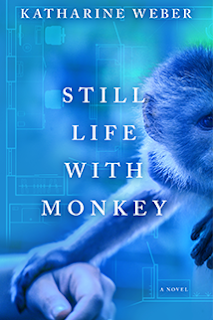
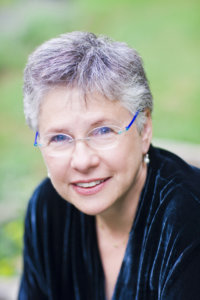
I first met Katharine Weber on the now defunct and totally wonderful online bookish site Readerville. We stayed friends and her expert eye unlocked many of my novels for me I(I'm so so grateful to her.) Her new novel and seventh book, STILL LIFE WITH MONKEY (bet you cannot take your eyes off that gorgeous cover, can you?) is both profound and moving, about a man, paralyzed in an accident, who acquires a monkey helper, but the question remains: Is this life worth living?
Katharine’s also the author of TRUE CONFECTIONS, THE MEMORY OF ALL THAT: GEORGE GERSHWIN, KAY SWIFT, AND MY FAMILY'S LEGACY OF INFIDELITIES, TRIANGLE, THE LITTLE WOMEN. THE MUSIC LESSON and OBJECTS IN MIRROR ARE CLOSER THAN THEY APPEAR. She's also the Richard L. Thomas Visiting Professor of Creative Writing at Kenyon College, and she previously taught at Yale.
Let's take a gander at all the praise STILL LIFE WITH MONKEY is garnering:
Lucy Scholes in THE NEW YORK TIMES BOOK REVIEW: “Still Life With Monkey” is profoundly humane even while it’s asking the most difficult questions.”
Karen Joy Fowler in the THE WASHINGTON POST: “A beautifully wrought paean of praise for the ordinary pleasures taken for granted by the able-bodied. In precise and often luminous prose, with intelligence and tenderness, Weber’s latest novel examines the question of what makes a life worth living.”
Starred review in PW: "A heartbreaking triumph.”
Starred review in Kirkus: "Rigorously unsentimental yet suffused with emotion: possibly the best work yet from an always stimulating writer."
Booklist: "Weber’s sixth novel is a nuanced investigation of what is left when all of the ways one identifies oneself are wiped out in an instant . . . Beautiful, emotionally resonant storytelling.”
BookPage: "Weber expertly weaves Duncan’s internal conflict throughout the novel, constantly making the reader wonder if he will find the strength to continue living in his new circumstances and carry on with a will to make new legacies. Most importantly, Still Life with Monkey begs the question, “What would I do in this situation?” It’s a question that lingers long after the book ends."
Tayari Jones: "A brilliantly crafted novel, brimming with heart. Pairing poetry with wisdom, this is a story about what it means to live, love, and grow.”
Thank you so, so much, Katharine for being here. And for a whole lot else.
Still Life With Monkey asks the unsettling question—just what makes a life worth living? And I think it’s important to recognize that for different people, this means different things. Can you talk about this please?
That’s a great question, Caroline. Who can say what is enough to make a life? What varieties of pain, both physical and emotional, are bearable, or unbearable? These are tremendously personal feelings, and consequent decisions. We can all pretty easily think about people we know who are in ordinary life situations we cannot quite understand—why doesn’t she leave him? Why does he put up with that terrible boss when he could get a much better job for more money? Why don’t they move from that awful neighborhood? But we never really know what it’s like to be anyone but ourselves.
Suffering that one person can tolerate for years, another might not be able to stand for a few weeks. There are infinite varieties of pain and suffering and loss, some of them more visible than others. The biggest challenges of all, the life and death kinds of challenges, are no different. How much anyone can endure, and how to make choices about change, about seeking the end of pain and suffering, even the biggest choices of all—these are personal decisions and also rights that every one of us possesses. Whether or not disability has meant that certain kinds of choices are literally out of reach.
Ottoline, the helper monkey, is one of the most charming creations in all of literature, I believe. I know you did extensive research with real monkey helpers. How much of your research is Ottoline, and how much did you build on and create?
I spent several years educating myself about capuchin monkeys in their natural habitats, and also about the training of capuchins to make them helper monkeys capable of providing “helping hands” to disabled people. Capuchin monkeys are the smartest New World monkeys, and they are capable of learning more than fifty commands for switching on lights, turning pages, picking up dropped phones and remotes and so on – all skills that allow disabled people to have more autonomy and independence and privacy. Training consists on a great deal of monkey see, monkey do.
The Primate Institute in New Haven of my novel is fictional, but there is an actual Monkey College at Helping Hands, in Boston. (You can see great monkey videos on their website, www.helpinghands.org.) I spent some time behind the scenes at Monkey College, and then, well after I had completed a first draft of the novel, I was introduced, by a mutual friend, to Kent and Nancy Converse and Kent’s monkey helper, Farah. They were generous in allowing me to spend time with them to deepen my sense of life with a monkey helper, and after several visits we had begun to develop what is now an enduring friendship. The novel is dedicated to them (as well as to another good friend, also a quadriplegic, whose generosity and frankness gave me many insights into the emotional and physical experience of becoming a quadriplegic after a catastrophic accident.)
Though I have never based a character in any of my six novels on any actual person, I admit that Ottoline, though she had come to life in my early drafts long before I met Farah, is truly inspired very directly by my little monkey friend Farah. It is my good fortune that Farah likes me, so spending time with Kent and Nancy and Farah is always a very rich experience. (If you’re wondering, Farah the monkey is some 36 years old. She is a tufted capuchin, with a shock of fur on the top of her head. Think about who was famous for her big hair 36 years ago, and you will discover the origin of this little monkey’s name.
Still Life With Monkey was originally called The Monkey Helper. Why the name change?
Every novel I writer starts off with a plan, and then inevitably I find myself deviating from the plan. You always have to be open to surprising yourself when you’re writing a novel. I thought I was writing “about” a monkey helper, when in fact I was writing about a complex marriage, twins, secrets (everyone in the novel has secrets, including the monkey), architecture, life with a spinal cord injury, art conservation, and the right to die. So that working title became obsolete. I love the title Still Life With Monkey because it has layers of meaning. There is a tradition of bountiful still life paintings by French, Dutch, Spanish and Italian painters over three centuries. These are exquisitely rendered depictions of extraordinary arrangements of fruits, flowers, meats, game, and savory tarts, displayed temptingly in beautiful vessels, heaped on laden tables, an imminent feast that also suggests the transience of life’s pleasures. When these artists added a monkey or two snatching treats from the table, it was a playful commentary on human appetites. For my novel, this title offers layers of meaning. Even compromised, this is still life for Duncan. Paralyzed life is a still life. And now his life is indeed with a monkey. Duncan is obsessed with the quotidian pleasures of his life and how much he has lost. Ottoline can give him back some of his ability to make choices for himself. But is this still life with a monkey enough?
This novel feels and reads differently to me than your previous ones. Is this something you were aware of or is this just an organic change? (I’m always interested in how one novel grows out of or away from the previous ones.)
I appreciate your sense of this, Caroline. A real writer’s question. I agree, there is a lot about this novel that’s a shift for me. I spent some seven years writing this novel, partly because in these same years I have been teaching at Kenyon College (which I love) and have had less concentrated writing time. But also, it’s been a complex undertaking. It’s my longest novel (286 pages—I don’t write long novels.) It’s the first time my main character has been male. It’s the first time I have written principally in the third person. And it’s a high stakes narrative in many ways, with complex moral questions driving the story for each character. So there were indeed some deliberate challenges to myself with this novel. But also, it is my sixth novel and seventh book. You have to teach yourself to write each novel as you write it. I believe I am a both a better writer and a better teacher now than I have ever been before.
What’s obsessing you now and why?
I always love this question in your Q&As on your blog. Setting aside for the moment my chronic rage and anxiety about the state of the world and all the consequent disasters since the current occupant of the White House took office, I am juggling three different next novels in my head. This means, in addition to mapping out the situation and the story for each, which I have done but am also still developing, that I am at different moments delving into Amish culture and traditions, rumspringa, polydactyly, puppy mills (for Rumspringa), New Age healing retreats, poker tournaments, and sea glass collecting (for Traveling Angel), and details of daily Pueblo life in New Mexico and Arizona circa 1886 (for The Going Away Woman). Inevitably, before I am done with each of these novels, there will be numerous other rabbit holes down which I will burrow in pursuit of my strange idea of research.
What question didn’t I ask that I should have?
What am I reading now? And the answer is many short stories by Henry James and Edith Wharton, for an experimental advanced fiction seminar I am teaching right now, for which I am having my students read only the short fiction of these two masters as they write their own stories. Anyone who has ever been present when an author visits a book group must read Edith Wharton’s wickedly funny story “Xingu.”) I am also, right now, reading Deborah Eisenberg’s brilliant new story collection Your Duck is My Duck, both because I adore her work and this is the first book she has published in twelve years, and also because I am thrilled to report that we will be reading together at the Miami Book Fair on November 18th.
<!-- /* Font Definitions */ @font-face {font-family:"<span class="goog-spellcheck-word" style="background: yellow none repeat scroll 0% 0%;" id=":dm.373" tabindex="-1" role="menuitem" aria-haspopup="true">Cambria</span> Math"; <span class="goog-spellcheck-word" style="background: yellow none repeat scroll 0% 0%;" id=":dm.375" tabindex="-1" role="menuitem" aria-haspopup="true">panose</span>-1:2 4 5 3 5 4 6 3 2 4; <span class="goog-spellcheck-word" style="background: yellow none repeat scroll 0% 0%;" id=":dm.387" tabindex="-1" role="menuitem" aria-haspopup="true">mso</span>-font-<span class="goog-spellcheck-word" style="background: yellow none repeat scroll 0% 0%;" id=":dm.389" tabindex="-1" role="menuitem" aria-haspopup="true">charset</span>:0; <span class="goog-spellcheck-word" style="background: yellow none repeat scroll 0% 0%;" id=":dm.391" tabindex="-1" role="menuitem" aria-haspopup="true">mso</span>-generic-font-family:auto; <span class="goog-spellcheck-word" style="background: yellow none repeat scroll 0% 0%;" id=":dm.396" tabindex="-1" role="menuitem" aria-haspopup="true">mso</span>-font-pitch:variable; <span class="goog-spellcheck-word" style="background: yellow none repeat scroll 0% 0%;" id=":dm.400" tabindex="-1" role="menuitem" aria-haspopup="true">mso</span>-font-signature:-536870145 1107305727 0 0 415 0;} @font-face {font-family:<span class="goog-spellcheck-word" style="background: yellow none repeat scroll 0% 0%;" id=":dm.413" tabindex="-1" role="menuitem" aria-haspopup="true">Cambria</span>; <span class="goog-spellcheck-word" style="background: yellow none repeat scroll 0% 0%;" id=":dm.414" tabindex="-1" role="menuitem" aria-haspopup="true">panose</span>-1:2 4 5 3 5 4 6 3 2 4; <span class="goog-spellcheck-word" style="background: yellow none repeat scroll 0% 0%;" id=":dm.426" tabindex="-1" role="menuitem" aria-haspopup="true">mso</span>-font-alt:<span class="goog-spellcheck-word" style="background: yellow none repeat scroll 0% 0%;" id=":dm.429" tabindex="-1" role="menuitem" aria-haspopup="true">Cambria</span>; <span class="goog-spellcheck-word" style="background: yellow none repeat scroll 0% 0%;" id=":dm.430" tabindex="-1" role="menuitem" aria-haspopup="true">mso</span>-font-<span class="goog-spellcheck-word" style="background: yellow none repeat scroll 0% 0%;" id=":dm.432" tabindex="-1" role="menuitem" aria-haspopup="true">charset</span>:0; <span class="goog-spellcheck-word" style="background: yellow none repeat scroll 0% 0%;" id=":dm.434" tabindex="-1" role="menuitem" aria-haspopup="true">mso</span>-generic-font-family:auto; <span class="goog-spellcheck-word" style="background: yellow none repeat scroll 0% 0%;" id=":dm.439" tabindex="-1" role="menuitem" aria-haspopup="true">mso</span>-font-pitch:variable; <span class="goog-spellcheck-word" style="background: yellow none repeat scroll 0% 0%;" id=":dm.443" tabindex="-1" role="menuitem" aria-haspopup="true">mso</span>-font-signature:-536870145 1073743103 0 0 415 0;} @font-face {font-family:Georgia; <span class="goog-spellcheck-word" style="background: yellow none repeat scroll 0% 0%;" id=":dm.457" tabindex="-1" role="menuitem" aria-haspopup="true">panose</span>-1:2 4 5 2 5 4 5 2 3 3; <span class="goog-spellcheck-word" style="background: yellow none repeat scroll 0% 0%;" id=":dm.469" tabindex="-1" role="menuitem" aria-haspopup="true">mso</span>-font-<span class="goog-spellcheck-word" style="background: yellow none repeat scroll 0% 0%;" id=":dm.471" tabindex="-1" role="menuitem" aria-haspopup="true">charset</span>:0; <span class="goog-spellcheck-word" style="background: yellow none repeat scroll 0% 0%;" id=":dm.473" tabindex="-1" role="menuitem" aria-haspopup="true">mso</span>-generic-font-family:auto; <span class="goog-spellcheck-word" style="background: yellow none repeat scroll 0% 0%;" id=":dm.478" tabindex="-1" role="menuitem" aria-haspopup="true">mso</span>-font-pitch:variable; <span class="goog-spellcheck-word" style="background: yellow none repeat scroll 0% 0%;" id=":dm.482" tabindex="-1" role="menuitem" aria-haspopup="true">mso</span>-font-signature:647 0 0 0 159 0;} /* Style Definitions */ p.<span class="goog-spellcheck-word" style="background: yellow none repeat scroll 0% 0%;" id=":dm.494" tabindex="-1" role="menuitem" aria-haspopup="true">MsoNormal</span>, <span class="goog-spellcheck-word" style="background: yellow none repeat scroll 0% 0%;" id=":dm.495" tabindex="-1" role="menuitem" aria-haspopup="true">li</span>.<span class="goog-spellcheck-word" style="background: yellow none repeat scroll 0% 0%;" id=":dm.496" tabindex="-1" role="menuitem" aria-haspopup="true">MsoNormal</span>, div.<span class="goog-spellcheck-word" style="background: yellow none repeat scroll 0% 0%;" id=":dm.498" tabindex="-1" role="menuitem" aria-haspopup="true">MsoNormal</span> {<span class="goog-spellcheck-word" style="background: yellow none repeat scroll 0% 0%;" id=":dm.499" tabindex="-1" role="menuitem" aria-haspopup="true">mso</span>-style-<span class="goog-spellcheck-word" style="background: yellow none repeat scroll 0% 0%;" id=":dm.501" tabindex="-1" role="menuitem" aria-haspopup="true">unhide</span>:no; <span class="goog-spellcheck-word" style="background: yellow none repeat scroll 0% 0%;" id=":dm.502" tabindex="-1" role="menuitem" aria-haspopup="true">mso</span>-style-<span class="goog-spellcheck-word" style="background: yellow none repeat scroll 0% 0%;" id=":dm.504" tabindex="-1" role="menuitem" aria-haspopup="true">qformat</span>:yes; <span class="goog-spellcheck-word" style="background: yellow none repeat scroll 0% 0%;" id=":dm.506" tabindex="-1" role="menuitem" aria-haspopup="true">mso</span>-style-parent:""; margin:0in; margin-bottom:.0001pt; <span class="goog-spellcheck-word" style="background: yellow none repeat scroll 0% 0%;" id=":dm.514" tabindex="-1" role="menuitem" aria-haspopup="true">mso</span>-pagination:widow-orphan; <span class="goog-spellcheck-word" style="background: yellow none repeat scroll 0% 0%;" id=":dm.518" tabindex="-1" role="menuitem" aria-haspopup="true">mso</span>-hyphenate:none; <span class="goog-spellcheck-word" style="background: yellow none repeat scroll 0% 0%;" id=":dm.521" tabindex="-1" role="menuitem" aria-haspopup="true">mso</span>-layout-grid-align:none; text-<span class="goog-spellcheck-word" style="background: yellow none repeat scroll 0% 0%;" id=":dm.527" tabindex="-1" role="menuitem" aria-haspopup="true">autospace</span>:none; font-size:12.0pt; font-family:<span class="goog-spellcheck-word" style="background: yellow none repeat scroll 0% 0%;" id=":dm.535" tabindex="-1" role="menuitem" aria-haspopup="true">Cambria</span>; <span class="goog-spellcheck-word" style="background: yellow none repeat scroll 0% 0%;" id=":dm.536" tabindex="-1" role="menuitem" aria-haspopup="true">mso</span>-<span class="goog-spellcheck-word" style="background: yellow none repeat scroll 0% 0%;" id=":dm.537" tabindex="-1" role="menuitem" aria-haspopup="true">fareast</span>-font-family:"Times New Roman"; <span class="goog-spellcheck-word" style="background: yellow none repeat scroll 0% 0%;" id=":dm.542" tabindex="-1" role="menuitem" aria-haspopup="true">mso</span>-<span class="goog-spellcheck-word" style="background: yellow none repeat scroll 0% 0%;" id=":dm.543" tabindex="-1" role="menuitem" aria-haspopup="true">bidi</span>-font-family:<span class="goog-spellcheck-word" style="background: yellow none repeat scroll 0% 0%;" id=":dm.546" tabindex="-1" role="menuitem" aria-haspopup="true">Cambria</span>;} p.<span class="goog-spellcheck-word" style="background: yellow none repeat scroll 0% 0%;" id=":dm.548" tabindex="-1" role="menuitem" aria-haspopup="true">MsoHeader</span>, <span class="goog-spellcheck-word" style="background: yellow none repeat scroll 0% 0%;" id=":dm.549" tabindex="-1" role="menuitem" aria-haspopup="true">li</span>.<span class="goog-spellcheck-word" style="background: yellow none repeat scroll 0% 0%;" id=":dm.550" tabindex="-1" role="menuitem" aria-haspopup="true">MsoHeader</span>, div.<span class="goog-spellcheck-word" style="background: yellow none repeat scroll 0% 0%;" id=":dm.552" tabindex="-1" role="menuitem" aria-haspopup="true">MsoHeader</span> {<span class="goog-spellcheck-word" style="background: yellow none repeat scroll 0% 0%;" id=":dm.553" tabindex="-1" role="menuitem" aria-haspopup="true">mso</span>-style-priority:99; <span class="goog-spellcheck-word" style="background: yellow none repeat scroll 0% 0%;" id=":dm.557" tabindex="-1" role="menuitem" aria-haspopup="true">mso</span>-style-<span class="goog-spellcheck-word" style="background: yellow none repeat scroll 0% 0%;" id=":dm.559" tabindex="-1" role="menuitem" aria-haspopup="true">unhide</span>:no; <span class="goog-spellcheck-word" style="background: yellow none repeat scroll 0% 0%;" id=":dm.560" tabindex="-1" role="menuitem" aria-haspopup="true">mso</span>-style-link:"Header Char"; margin:0in; margin-bottom:.0001pt; <span class="goog-spellcheck-word" style="background: yellow none repeat scroll 0% 0%;" id=":dm.570" tabindex="-1" role="menuitem" aria-haspopup="true">mso</span>-pagination:widow-orphan; <span class="goog-spellcheck-word" style="background: yellow none repeat scroll 0% 0%;" id=":dm.574" tabindex="-1" role="menuitem" aria-haspopup="true">mso</span>-hyphenate:none; <span class="goog-spellcheck-word" style="background: yellow none repeat scroll 0% 0%;" id=":dm.577" tabindex="-1" role="menuitem" aria-haspopup="true">mso</span>-layout-grid-align:none; text-<span class="goog-spellcheck-word" style="background: yellow none repeat scroll 0% 0%;" id=":dm.583" tabindex="-1" role="menuitem" aria-haspopup="true">autospace</span>:none; font-size:12.0pt; font-family:<span class="goog-spellcheck-word" style="background: yellow none repeat scroll 0% 0%;" id=":dm.591" tabindex="-1" role="menuitem" aria-haspopup="true">Cambria</span>; <span class="goog-spellcheck-word" style="background: yellow none repeat scroll 0% 0%;" id=":dm.592" tabindex="-1" role="menuitem" aria-haspopup="true">mso</span>-<span class="goog-spellcheck-word" style="background: yellow none repeat scroll 0% 0%;" id=":dm.593" tabindex="-1" role="menuitem" aria-haspopup="true">fareast</span>-font-family:"Times New Roman"; <span class="goog-spellcheck-word" style="background: yellow none repeat scroll 0% 0%;" id=":dm.598" tabindex="-1" role="menuitem" aria-haspopup="true">mso</span>-<span class="goog-spellcheck-word" style="background: yellow none repeat scroll 0% 0%;" id=":dm.599" tabindex="-1" role="menuitem" aria-haspopup="true">bidi</span>-font-family:<span class="goog-spellcheck-word" style="background: yellow none repeat scroll 0% 0%;" id=":dm.602" tabindex="-1" role="menuitem" aria-haspopup="true">Cambria</span>;} p.<span class="goog-spellcheck-word" style="background: yellow none repeat scroll 0% 0%;" id=":dm.604" tabindex="-1" role="menuitem" aria-haspopup="true">MsoFooter</span>, <span class="goog-spellcheck-word" style="background: yellow none repeat scroll 0% 0%;" id=":dm.605" tabindex="-1" role="menuitem" aria-haspopup="true">li</span>.<span class="goog-spellcheck-word" style="background: yellow none repeat scroll 0% 0%;" id=":dm.606" tabindex="-1" role="menuitem" aria-haspopup="true">MsoFooter</span>, div.<span class="goog-spellcheck-word" style="background: yellow none repeat scroll 0% 0%;" id=":dm.608" tabindex="-1" role="menuitem" aria-haspopup="true">MsoFooter</span> {<span class="goog-spellcheck-word" style="background: yellow none repeat scroll 0% 0%;" id=":dm.609" tabindex="-1" role="menuitem" aria-haspopup="true">mso</span>-style-priority:99; <span class="goog-spellcheck-word" style="background: yellow none repeat scroll 0% 0%;" id=":dm.613" tabindex="-1" role="menuitem" aria-haspopup="true">mso</span>-style-<span class="goog-spellcheck-word" style="background: yellow none repeat scroll 0% 0%;" id=":dm.615" tabindex="-1" role="menuitem" aria-haspopup="true">unhide</span>:no; <span class="goog-spellcheck-word" style="background: yellow none repeat scroll 0% 0%;" id=":dm.616" tabindex="-1" role="menuitem" aria-haspopup="true">mso</span>-style-link:"Footer Char"; margin:0in; margin-bottom:.0001pt; <span class="goog-spellcheck-word" style="background: yellow none repeat scroll 0% 0%;" id=":dm.626" tabindex="-1" role="menuitem" aria-haspopup="true">mso</span>-pagination:widow-orphan; <span class="goog-spellcheck-word" style="background: yellow none repeat scroll 0% 0%;" id=":dm.630" tabindex="-1" role="menuitem" aria-haspopup="true">mso</span>-hyphenate:none; <span class="goog-spellcheck-word" style="background: yellow none repeat scroll 0% 0%;" id=":dm.633" tabindex="-1" role="menuitem" aria-haspopup="true">mso</span>-layout-grid-align:none; text-<span class="goog-spellcheck-word" style="background: yellow none repeat scroll 0% 0%;" id=":dm.639" tabindex="-1" role="menuitem" aria-haspopup="true">autospace</span>:none; font-size:12.0pt; font-family:<span class="goog-spellcheck-word" style="background: yellow none repeat scroll 0% 0%;" id=":dm.647" tabindex="-1" role="menuitem" aria-haspopup="true">Cambria</span>; <span class="goog-spellcheck-word" style="background: yellow none repeat scroll 0% 0%;" id=":dm.648" tabindex="-1" role="menuitem" aria-haspopup="true">mso</span>-<span class="goog-spellcheck-word" style="background: yellow none repeat scroll 0% 0%;" id=":dm.649" tabindex="-1" role="menuitem" aria-haspopup="true">fareast</span>-font-family:"Times New Roman"; <span class="goog-spellcheck-word" style="background: yellow none repeat scroll 0% 0%;" id=":dm.654" tabindex="-1" role="menuitem" aria-haspopup="true">mso</span>-<span class="goog-spellcheck-word" style="background: yellow none repeat scroll 0% 0%;" id=":dm.655" tabindex="-1" role="menuitem" aria-haspopup="true">bidi</span>-font-family:<span class="goog-spellcheck-word" style="background: yellow none repeat scroll 0% 0%;" id=":dm.658" tabindex="-1" role="menuitem" aria-haspopup="true">Cambria</span>;} span.<span class="goog-spellcheck-word" style="background: yellow none repeat scroll 0% 0%;" id=":dm.660" tabindex="-1" role="menuitem" aria-haspopup="true">InternetLink</span> {<span class="goog-spellcheck-word" style="background: yellow none repeat scroll 0% 0%;" id=":dm.661" tabindex="-1" role="menuitem" aria-haspopup="true">mso</span>-style-name:"Internet Link"; <span class="goog-spellcheck-word" style="background: yellow none repeat scroll 0% 0%;" id=":dm.666" tabindex="-1" role="menuitem" aria-haspopup="true">mso</span>-style-priority:99; <span class="goog-spellcheck-word" style="background: yellow none repeat scroll 0% 0%;" id=":dm.670" tabindex="-1" role="menuitem" aria-haspopup="true">mso</span>-style-<span class="goog-spellcheck-word" style="background: yellow none repeat scroll 0% 0%;" id=":dm.672" tabindex="-1" role="menuitem" aria-haspopup="true">unhide</span>:no; <span class="goog-spellcheck-word" style="background: yellow none repeat scroll 0% 0%;" id=":dm.673" tabindex="-1" role="menuitem" aria-haspopup="true">mso</span>-style-parent:""; color:#0563C1; text-decoration:underline; text-underline:single;} span.<span class="goog-spellcheck-word" style="background: yellow none repeat scroll 0% 0%;" id=":dm.685" tabindex="-1" role="menuitem" aria-haspopup="true">HeaderChar</span> {<span class="goog-spellcheck-word" style="background: yellow none repeat scroll 0% 0%;" id=":dm.686" tabindex="-1" role="menuitem" aria-haspopup="true">mso</span>-style-name:"Header Char"; <span class="goog-spellcheck-word" style="background: yellow none repeat scroll 0% 0%;" id=":dm.691" tabindex="-1" role="menuitem" aria-haspopup="true">mso</span>-style-priority:99; <span class="goog-spellcheck-word" style="background: yellow none repeat scroll 0% 0%;" id=":dm.695" tabindex="-1" role="menuitem" aria-haspopup="true">mso</span>-style-<span class="goog-spellcheck-word" style="background: yellow none repeat scroll 0% 0%;" id=":dm.697" tabindex="-1" role="menuitem" aria-haspopup="true">unhide</span>:no; <span class="goog-spellcheck-word" style="background: yellow none repeat scroll 0% 0%;" id=":dm.698" tabindex="-1" role="menuitem" aria-haspopup="true">mso</span>-style-locked:yes; <span class="goog-spellcheck-word" style="background: yellow none repeat scroll 0% 0%;" id=":dm.702" tabindex="-1" role="menuitem" aria-haspopup="true">mso</span>-style-link:Header; <span class="goog-spellcheck-word" style="background: yellow none repeat scroll 0% 0%;" id=":dm.706" tabindex="-1" role="menuitem" aria-haspopup="true">mso</span>-<span class="goog-spellcheck-word" style="background: yellow none repeat scroll 0% 0%;" id=":dm.707" tabindex="-1" role="menuitem" aria-haspopup="true">ansi</span>-font-size:12.0pt; <span class="goog-spellcheck-word" style="background: yellow none repeat scroll 0% 0%;" id=":dm.712" tabindex="-1" role="menuitem" aria-haspopup="true">mso</span>-<span class="goog-spellcheck-word" style="background: yellow none repeat scroll 0% 0%;" id=":dm.713" tabindex="-1" role="menuitem" aria-haspopup="true">bidi</span>-font-size:12.0pt; font-family:<span class="goog-spellcheck-word" style="background: yellow none repeat scroll 0% 0%;" id=":dm.720" tabindex="-1" role="menuitem" aria-haspopup="true">Cambria</span>; <span class="goog-spellcheck-word" style="background: yellow none repeat scroll 0% 0%;" id=":dm.721" tabindex="-1" role="menuitem" aria-haspopup="true">mso</span>-<span class="goog-spellcheck-word" style="background: yellow none repeat scroll 0% 0%;" id=":dm.722" tabindex="-1" role="menuitem" aria-haspopup="true">ascii</span>-font-family:<span class="goog-spellcheck-word" style="background: yellow none repeat scroll 0% 0%;" id=":dm.725" tabindex="-1" role="menuitem" aria-haspopup="true">Cambria</span>; <span class="goog-spellcheck-word" style="background: yellow none repeat scroll 0% 0%;" id=":dm.726" tabindex="-1" role="menuitem" aria-haspopup="true">mso</span>-<span class="goog-spellcheck-word" style="background: yellow none repeat scroll 0% 0%;" id=":dm.727" tabindex="-1" role="menuitem" aria-haspopup="true">hansi</span>-font-family:<span class="goog-spellcheck-word" style="background: yellow none repeat scroll 0% 0%;" id=":dm.730" tabindex="-1" role="menuitem" aria-haspopup="true">Cambria</span>; <span class="goog-spellcheck-word" style="background: yellow none repeat scroll 0% 0%;" id=":dm.731" tabindex="-1" role="menuitem" aria-haspopup="true">mso</span>-<span class="goog-spellcheck-word" style="background: yellow none repeat scroll 0% 0%;" id=":dm.732" tabindex="-1" role="menuitem" aria-haspopup="true">bidi</span>-font-family:<span class="goog-spellcheck-word" style="background: yellow none repeat scroll 0% 0%;" id=":dm.735" tabindex="-1" role="menuitem" aria-haspopup="true">Cambria</span>;} span.<span class="goog-spellcheck-word" style="background: yellow none repeat scroll 0% 0%;" id=":dm.737" tabindex="-1" role="menuitem" aria-haspopup="true">FooterChar</span> {<span class="goog-spellcheck-word" style="background: yellow none repeat scroll 0% 0%;" id=":dm.738" tabindex="-1" role="menuitem" aria-haspopup="true">mso</span>-style-name:"Footer Char"; <span class="goog-spellcheck-word" style="background: yellow none repeat scroll 0% 0%;" id=":dm.743" tabindex="-1" role="menuitem" aria-haspopup="true">mso</span>-style-priority:99; <span class="goog-spellcheck-word" style="background: yellow none repeat scroll 0% 0%;" id=":dm.747" tabindex="-1" role="menuitem" aria-haspopup="true">mso</span>-style-<span class="goog-spellcheck-word" style="background: yellow none repeat scroll 0% 0%;" id=":dm.749" tabindex="-1" role="menuitem" aria-haspopup="true">unhide</span>:no; <span class="goog-spellcheck-word" style="background: yellow none repeat scroll 0% 0%;" id=":dm.750" tabindex="-1" role="menuitem" aria-haspopup="true">mso</span>-style-locked:yes; <span class="goog-spellcheck-word" style="background: yellow none repeat scroll 0% 0%;" id=":dm.754" tabindex="-1" role="menuitem" aria-haspopup="true">mso</span>-style-link:Footer; <span class="goog-spellcheck-word" style="background: yellow none repeat scroll 0% 0%;" id=":dm.758" tabindex="-1" role="menuitem" aria-haspopup="true">mso</span>-<span class="goog-spellcheck-word" style="background: yellow none repeat scroll 0% 0%;" id=":dm.759" tabindex="-1" role="menuitem" aria-haspopup="true">ansi</span>-font-size:12.0pt; <span class="goog-spellcheck-word" style="background: yellow none repeat scroll 0% 0%;" id=":dm.764" tabindex="-1" role="menuitem" aria-haspopup="true">mso</span>-<span class="goog-spellcheck-word" style="background: yellow none repeat scroll 0% 0%;" id=":dm.765" tabindex="-1" role="menuitem" aria-haspopup="true">bidi</span>-font-size:12.0pt; font-family:<span class="goog-spellcheck-word" style="background: yellow none repeat scroll 0% 0%;" id=":dm.772" tabindex="-1" role="menuitem" aria-haspopup="true">Cambria</span>; <span class="goog-spellcheck-word" style="background: yellow none repeat scroll 0% 0%;" id=":dm.773" tabindex="-1" role="menuitem" aria-haspopup="true">mso</span>-<span class="goog-spellcheck-word" style="background: yellow none repeat scroll 0% 0%;" id=":dm.774" tabindex="-1" role="menuitem" aria-haspopup="true">ascii</span>-font-family:<span class="goog-spellcheck-word" style="background: yellow none repeat scroll 0% 0%;" id=":dm.777" tabindex="-1" role="menuitem" aria-haspopup="true">Cambria</span>; <span class="goog-spellcheck-word" style="background: yellow none repeat scroll 0% 0%;" id=":dm.778" tabindex="-1" role="menuitem" aria-haspopup="true">mso</span>-<span class="goog-spellcheck-word" style="background: yellow none repeat scroll 0% 0%;" id=":dm.779" tabindex="-1" role="menuitem" aria-haspopup="true">hansi</span>-font-family:<span class="goog-spellcheck-word" style="background: yellow none repeat scroll 0% 0%;" id=":dm.782" tabindex="-1" role="menuitem" aria-haspopup="true">Cambria</span>; <span class="goog-spellcheck-word" style="background: yellow none repeat scroll 0% 0%;" id=":dm.783" tabindex="-1" role="menuitem" aria-haspopup="true">mso</span>-<span class="goog-spellcheck-word" style="background: yellow none repeat scroll 0% 0%;" id=":dm.784" tabindex="-1" role="menuitem" aria-haspopup="true">bidi</span>-font-family:<span class="goog-spellcheck-word" style="background: yellow none repeat scroll 0% 0%;" id=":dm.787" tabindex="-1" role="menuitem" aria-haspopup="true">Cambria</span>;} .<span class="goog-spellcheck-word" style="background: yellow none repeat scroll 0% 0%;" id=":dm.788" tabindex="-1" role="menuitem" aria-haspopup="true">MsoChpDefault</span> {<span class="goog-spellcheck-word" style="background: yellow none repeat scroll 0% 0%;" id=":dm.789" tabindex="-1" role="menuitem" aria-haspopup="true">mso</span>-style-type:export-only; <span class="goog-spellcheck-word" style="background: yellow none repeat scroll 0% 0%;" id=":dm.794" tabindex="-1" role="menuitem" aria-haspopup="true">mso</span>-default-props:yes; font-size:10.0pt; <span class="goog-spellcheck-word" style="background: yellow none repeat scroll 0% 0%;" id=":dm.802" tabindex="-1" role="menuitem" aria-haspopup="true">mso</span>-<span class="goog-spellcheck-word" style="background: yellow none repeat scroll 0% 0%;" id=":dm.803" tabindex="-1" role="menuitem" aria-haspopup="true">ansi</span>-font-size:10.0pt; <span class="goog-spellcheck-word" style="background: yellow none repeat scroll 0% 0%;" id=":dm.808" tabindex="-1" role="menuitem" aria-haspopup="true">mso</span>-<span class="goog-spellcheck-word" style="background: yellow none repeat scroll 0% 0%;" id=":dm.809" tabindex="-1" role="menuitem" aria-haspopup="true">bidi</span>-font-size:10.0pt;} @page WordSection1 {size:8.5in 11.0in; margin:1.0in 1.25in 1.0in 1.25in; <span class="goog-spellcheck-word" style="background: yellow none repeat scroll 0% 0%;" id=":dm.830" tabindex="-1" role="menuitem" aria-haspopup="true">mso</span>-header-margin:.5in; <span class="goog-spellcheck-word" style="background: yellow none repeat scroll 0% 0%;" id=":dm.834" tabindex="-1" role="menuitem" aria-haspopup="true">mso</span>-footer-margin:9.0pt; <span class="goog-spellcheck-word" style="background: yellow none repeat scroll 0% 0%;" id=":dm.839" tabindex="-1" role="menuitem" aria-haspopup="true">mso</span>-page-numbers:1; <span class="goog-spellcheck-word" style="background: yellow none repeat scroll 0% 0%;" id=":dm.843" tabindex="-1" role="menuitem" aria-haspopup="true">mso</span>-paper-source:0;} div.WordSection1 {page:WordSection1;} </style> -->
Published on October 22, 2018 10:13
October 13, 2018
Anne Lamott (!) talks about why dying in real life is not like dying in the movies, how to not hate those in power, grace, grief, love and so much more in ALMOST EVERYTHING: NOTES ON HOPE.
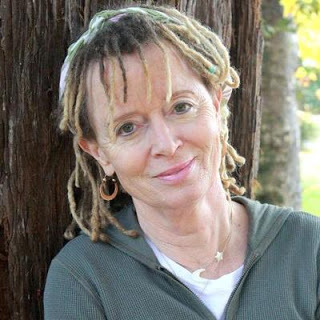
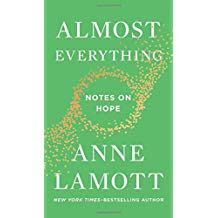
I'm so thrilled to host Anne Lamott here. But first, some personal stuff.
This is what I know about Anne Lamott:
Many years ago, after I lost a baby 3 1/2 months into my pregnancy, I wrote Anne Lamott. I didn't know her. I had never met her. But somehow, in my grief and pain, I thought she would understand and I needed to write her. Imagine my shock when I came home to find this compassionate, funny, smoky voice on my answering machine talking about what I had gone through and how I would be okay. THAT IS ANNIE LAMOTT, folks.
Fast forward. Algonquin had a series where they had really big, famous authors, interview not-so-big or not-so-famous ones. Annie agreed to interview me. The place was packed, but what I remember most was getting in a limo (!) with Annie and she dug into her purse and pulled out half a peanut butter sandwich and said, "Hungry? Want this?" THAT, TOO, IS ANNIE LAMOTT, folks
Through the years, we've stayed in touch. I've read everything she's written, and this book ALMOST EVERYTHING got to me in a way nothing she's written before ever has. Of course, I was laughing, but I was also weeping in parts. About grief, death, politics, kindness, family, cookies, and so much more, this is just an extraordinary book, and I'm thrilled to host Anne Lamott here.
This seems like such an important book for now. At points, I was weeping (I was also laughing, too, so there is that.) Let’s talk about Almost Everything. Why the almost? Why do you think almost is necessary? I mean, what if we knew everything? Could there really be no growth?
The original title of this book was Doomed: A Book of Hope, but we changed it to Almost Everything because it is really Almost Everything I know of any importance that I can pass on to my 15 year old niece and 9 year old grandson. I wanted to pass along everything that would have been so helpful to me along the way—that everyone is a mess deep in, and it just hurts to compare your insides to other people’s outsides. That families are hard, hard, hard. That all truth is paradox. That writing never goes well, but here are some tips I know about how to get it done very day.
It’s “almost” because some of the stuff I know something about—ie how to stay sober over time, how to survive the loss of a dog—is material I’ve already written about, that might not be relevant to the young people in my family or the public at large.
These are dark political days, and for a long time, I clung to the Mr. Rogers’ quote, about “looking for the helpers.” I feel like your book really is doing the same thing. Instead of hating, which is easy to do, AND it sometimes feels good to do it, we need, instead, to get rid of it so we can focus on what we can do—and sometimes that’s just the smallest thing. Can you talk about this please?
Well, there’s a whole chapter of not letting them get you to hate them, because the. You turn INTO them, and you lose your center and strength. But the willingness for me to change—in this case to look at my hate and judgment—comes from the pain of not changing. And all important change happens Incrementally, and from awareness—you notice what a jerk you’re being in traffic, and how it makes you feel, i.e. uptight and self-righteous—so instead, you start letting people go first, and that feels lovely. That feels like a world you would like to live in—so you help begin to create it.
You devoutly believe in God, yet you welcome all those who do not, which is really generous and wise. But why do you think things have gotten so worse for us as a whole people and a whole planet? Have we not been tested enough? And what do you think is the best way for us to not freak out about statistics, like our planet has ten more years, or the GOP want to do away with preexisting conditions on health insurance?
My theory about how things have gotten so awful and insane is that this is the end of the 50’s, where males dominated and women were subservient and didn’t partake of the wealth and power—and the male power structure is terrified and very angry about having to share. It’s dying dinosaurs, doing a tremendous amount of damage with their tails.
The best way not to freak out is to offer warmth and light to oneself, and then to the world, through small acts of generosity, and creation. I love the quote of the priest who helped AA get off the ground, that sometimes heaven is just a new pair of glasses. So we take off the bad glasses, that see and fixate on the deterioration and conflicts everywhere, and we look out through the good glasses, through which we see the beauty all around us—look up! At the sky, the tree tops, the moon and stars. We see how beautifully, lovingly people are taking care of others. We see a few things that are actually working, that help us keep the little flames insight us lit. We see people to serve. We see the help and comfort that surrounds us.
Your chapter on families did me in. Families do indeed live imprints on us when we are young, and to survive, we become those, but we don’t have to stay that label. That felt ridiculously freeing. I also loved your advice on not trying to save or change a family member. I spent years trying to “fix” my mom and the only thing that happened was she became increasingly resentful and angry and she never changed. And when I let go, we had a better, richer deeper relationship. This is such a hard lesson to learn! We can offer help, but if asked. Do you think that trying to fix others is actually trying to fix ourselves?
I think (or know) that trying to fix or save others is hopeless, and of course I have spent my life, until a few years ago, trying to rescue and fix everyone. I eventually realized that NO ONE, not once, has ever gotten an alcoholic sober, or gotten a very heavy person to slim down. It always has to be an inside job. But letting go of people and releasing them to their consequences, pain and higher powers (who turn out NOT to be us) often has the effect of giving them the space to begin healing. Or at least to begin to want to begin healing, which is huge.
We tried to fix our families because our parents needed us too. If we hadn’t tried, hadn’t used our life force to pump our parents up out of their unhappiness, the entire ship of our families might have sunk and gone under. And if we didn’t believe we were the problem, because we were defective or annoying, it meant our PARENTS were a mess, and should have raised orchids instead of kids; which would have meant we were doomed. Thinking that we were inadequate was our only shot at having a little control, since we could try to do better, and need less. So we did that—but it didn’t work. (I hate that!) And it didn’t work better at 30, 50, 64 but it’s still my go-to default stop when people I love are going under—but the healing is that I now just try to fix and rescue for a couple of hours, instead of decades.
Having lost my mom a year ago, your chapter on death was really moving and helpful and full of hope. It actually made me cry, maybe because it didn’t have a bit of woo woo to it. Can you talk about how hard won this knowledge must have been?
So hard won! I had two unsurvivable losses—my father died after two years with brain cancer, and my best friend died after being diagnosed with breast cancer. And both times, I was so incredibly close to them, and never left their side, and I learned that death was not like it is in movies. It’s very natural, excruciating, and beautiful, filled with grace and holy moments. Both dad and Pammy had Hospice helping them, and they are like the cavalry! Hospice nurses are like midwives, so tender and caring and knowledgeable, and they taught me how to show up, listen, and savor the time I have with my most beloved. Ever since, I’ve shown to help people who are going to die, and again and again, I see the miracle of life, the miracle of the precious community. I see grace everywhere, even when my heart is breaking. All truth is paradox. “Why is rarely a useful question,” you write. I want to dig into this a bit. Does this mean that when in discussion with people who have vehemently different political beliefs than ours, knowing where they came from won’t change things? For example, if a person has grown up in a white enclave in a rural area and has never met a Muslim and is terrified of them. That’s the why. They’ve had no experience. But what if they learn that that guy they always say hello to when they gas up their car, the one who always asks about the family, etc. etc. is Muslim? They might change their views now that they know someone. So wouldn’t the why be important there?
I’m sort of grounded more in action steps of entering into difficult emotional states and predicaments--i.e confronting my own prejudices and fears. I always wanted to know why why why when I was a child, and of course I still do. We had a family friend when I was growing up who used to always answer, “Because that is it’s nature.” I was raised by intellectuals, and believed there were codes I might break, or things I might achieve, after which I would be whole, or happy. But it turns out that “figure it out” is not a good slogan. So, to answer your question, I think figuring out why why why is always fascinating and sort of addictive for me, but not ultimately useful. What’s useful is doing the deep dive into the ways I am ignorant and/or self-righteous, followed by radical self-forgiveness. Then I carry that into the world.
You found love! You’re getting married! What’s the lesson here?
My son Sam, who is 29 (!!) has “We never give up” tattooed on his forearm. I’ve raised him with this battle cry and together we are teaching his son this. About 4 years ago at a big fundraiser in a church in San Francisco, the interviewer asked me what dream I still held onto, after all the blessings and accomplishments of my life. I thought about quietly, and then in front of a thousand people, I said, “I’d like to be married.” It was kind of shocking moment, to admit to such a deep longing. And then a couple of years later, I met this lovely man, brilliant and funny and kind and good-looking, and...two years later, a month ago, while we were watching the US Open tennis matches on TV, he asked me to marry him. So never give up. God is SUCH a show-off.
Published on October 13, 2018 10:10
October 12, 2018
A woman who has the power to change the weather, what it means to fit in, and more. Cai Emmons talks about her dazzling new novel WEATHER WOMAN
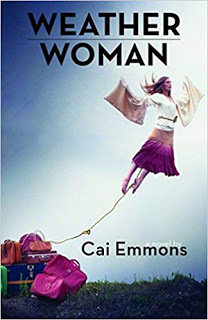
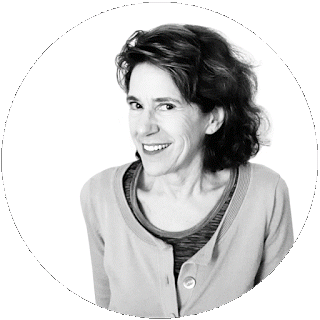
To say I loved Weather Woman is an understatement. Full of amazing science, and even more amazing characters, it's the kind of book you want to press into the hands of everyone you meet because you need them to read it so you all can obsess and talk about it.
Cai Emmons is the author of the novels His Mother’s Son (Harcourt) and The Stylist (HarperCollins). His Mother’s Son received starred reviews from Kirkus and Publisher’s Weekly, was a Booksense and Literary Guild selection, was translated into French and German, was reviewed by O Magazine and The Economist, and won an Oregon Book Award (the Ken Kesey Award) for fiction.
Her wonder-filled latest, Weather Woman, is the story of meteorologist Bronwyn Artair who discovers she has the power to change the weather. I am so thrilled to have Cai here. Thank you, Cai!
I was gobsmacked by your novel, by your insistent merging of both science and wonder. What was haunting you that led you to write this book? Why now?
Since I was a young child I’ve been fixated on the weather, extreme weather in particular. Weather seemed to speak to and through my body. Sometimes, I really wanted the weather to be different—on cold and rainy Halloween nights for example—and sometimes I even imagined I might change the weather if I concentrated hard enough. When I became a writer, it was a natural outgrowth of this obsession to create a character who really could alter the weather. This idea started to really press on my consciousness over the recent years of extreme weather events.
Where did you get your obvious love of weather? Did you research? What surprised you in your research? What did you learn about the intricacies of the brain? And is it true that a cubic foot of air carries enough energy to boil all the oceans of the world?
I love reading about science and often regret that I didn’t study more science in school. When I realized that this book would require delving deeply into meteorology and physics I was both excited and daunted. A book that I’d read earlier called The Intention Experiment became my springboard in thinking about the enormous untapped energy of the human brain/mind. The official research began with a “Great Courses” class about meteorology, 24 lectures by UCLA professor Robert Fovell, covering clouds, wind, tornadoes, cyclones, hurricanes, etc. Though it was supposedly an introductory class, much of it was beyond me, but I did my best. I read various other books about extreme weather and climate change and physics and neuroscience. One of my favorite books was The Cloud Collector’s Handbook, by Gavin Pretor-Pinney. I am still drawn to these books, still wanting to understand more about the mysteries of the universe. And, of course, the more you read the more questions arise.
My research brought me to many startling facts about the capabilities of animals: some bears can smell food 18 miles away; moths have the best sense of hearing (better than humans); some bacteria use a magnetic navigation system; frigate birds, who spend weeks at a time in flight, sleep while they are flying (sometimes using only one brain hemisphere). Such factoids wowed me, particularly in terms of how we tend to underestimate the natural world around us.
Esteemed physicist Richard Feynman is credited in some places on the Internet with having said that a cubic foot of air carries enough energy to boil all the oceans of the world. Like you, I was blown away by that idea, and I’ve been trying to corroborate it. It turns out not to be quite right (though it’s true that a great deal of energy can be contained in a very small space). John Toner, my go-to physics friend who researches flocking and is a professor at the University of Oregon, says:
“A cubic foot of air at normal atmospheric temperature and pressure weighs about 30 g (roughly one ounce). Using that most famous of physics formulae E=mc2 implies that if you could somehow convert all of that mass into energy, you'd get three thousand trillion Joules, or about one billion kilowatt hours, or about 3/4 of a megaton, of energy. That's a pretty big bang, but only enough to boil a cube of water about half a mile on a side. You would actually have to convert a volume of air about two miles on a side into energy to get enough to boil all of the oceans.”
My final takeaway from most of the reading I did is that every living thing and every human action is made possible by an expression of energy at the atomic level. Even human thought is facilitated by energy and creates energy. From that idea I was able to imagine myself into Bronwyn’s power.
What moved me so deeply was the way you wrote about how none of us are alone, none of us should be alone, and we should all be connected to the earth. Can you talk about that please?
I think about this subject a lot. As individuals we so easily become wrapped up in our heads, our unique experiences and problems. Our culture encourages us to individuate and distinguish ourselves from others, but human beings are fundamentally social creatures, and when you look at the cultures that are deemed by anthropologists and sociologists to be most happy, they are the ones in which there is a strong sense of community. Isolation from others—in the sparsely populated state of Wyoming, for example, or among some elderly people—is strongly associated with depression and suicide. We need each other, even those of us who are introverts. And being with other people tends to make us happy.
Bronwyn’s power originates with her strong attunement to the Earth. She notices the Earth and respects it. Near the end of the novel she discovers something she has been sensing all along—that she can’t save the Earth alone, even with her incredible sensibility and power. She needs the assistance and support of others. Whatever she does must be done in community—something the Arctic fox tries to convey to her.
I love the love story between Bronwyn and Matt, two souls who don’t quite fit in the regular world, but who seem to me to be the kind of people our world needs more of. Could you talk about this please?
I liked writing about Bronwyn and Matt because they are both capable people who are always underestimating themselves. I have always been drawn to humble people, and I agree that there are too few of these people in the world. Matt hates himself for using his journalistic skills to fabricate untruths, and Bronwyn hates herself for being from lowly circumstances and not being able to withstand the rigors of academic science. But they are both able to unearth the shining light in each other.
So much of this wonderful read is about the way we perceive, and how we control those perceptions. At one point, a character says, “There’s always someone trying to normalize you,” which, I think, is unfortunately true. How can a person who is a square peg celebrate that?
Oh my god, how true this is! I think women, in particular, are susceptible to feeling they should be different: more sociable, more pleasing to others, more willing to take whatever job is offered them. Understanding that it’s okay to be who you naturally are and actually feeling it’s okay to be that person are often at odds. It has taken me decades to fully accept that I can be both outwardly expressive and “big” and also sometimes be a hermit. Assertion and the passage of time help in healing this disjuncture.
Bronwyn undergoes a big moment of self-acceptance when she defies her mentor and states unequivocally that she can do what her mentor believes is impossible. Once she has crossed that line, she can’t ever fully return to her retreating earlier self.
Your use of language was also wonderful. “Bouyant as a dust kitty,” for example. Where did you get your love of language from? And for you, does the language come first or the story, or are they interchangeable?
I have loved language since I was quite young. When I was eight I began writing poetry. Much of it was nonsensical wordplay, stemming from my love of the sounds and rhythms words could make. That pleasure in words has never faded, but when I’m thinking about a novel it is usually catalyzed by some kind of what if…? What if I (or someone else) really could change the weather? That was the question that became the germ of Weather Woman. I love the extrapolation that begins to play out from posing such a question.
What’s obsessing you now and why?
I am always thinking about the stories of women, what it means for a person to be born into a female body. I’m a relatively short woman, and in crowds I often feel claustrophobic and in danger of being stepped on. I recently started wondering how things would be different if women were generally taller and bigger and physically stronger than men while all else remained the same. This is not the premise of the novel I’m currently working on, but the novel touches on a similar obsession.
What question didn’t I ask that I should have?
Perhaps a question about the relationship between Bronwyn and Diane. When I came to the end of the novel I found myself feeling a lot of sympathy towards Diane and interest in how their relationship would play out. I was curious about how much she could change. I answered this question by writing a sequel—something I never, ever expected to do, but once I began it tumbled out. Sinking Islands is the title. 1
<!-- /* Font Definitions */ @font-face {font-family:"Cambria Math"; panose-1:2 4 5 3 5 4 6 3 2 4; mso-font-charset:0; mso-generic-font-family:auto; mso-font-pitch:variable; mso-font-signature:-536870145 1107305727 0 0 415 0;} @font-face {font-family:Calibri; panose-1:2 15 5 2 2 2 4 3 2 4; mso-font-charset:0; mso-generic-font-family:auto; mso-font-pitch:variable; mso-font-signature:-520092929 1073786111 9 0 415 0;} @font-face {font-family:Cambria; panose-1:2 4 5 3 5 4 6 3 2 4; mso-font-charset:0; mso-generic-font-family:auto; mso-font-pitch:variable; mso-font-signature:-536870145 1073743103 0 0 415 0;} @font-face {font-family:Garamond; panose-1:2 2 4 4 3 3 1 1 8 3; mso-font-charset:0; mso-generic-font-family:auto; mso-font-pitch:variable; mso-font-signature:3 0 0 0 1 0;} @font-face {font-family:"MS Mincho"; mso-font-alt:"MS 明朝"; mso-font-charset:128; mso-generic-font-family:modern; mso-font-pitch:fixed; mso-font-signature:-536870145 1791491579 134217746 0 131231 0;} /* Style Definitions */ p.MsoNormal, li.MsoNormal, div.MsoNormal {mso-style-unhide:no; mso-style-qformat:yes; mso-style-parent:""; margin:0in; margin-bottom:.0001pt; mso-pagination:widow-orphan; font-size:12.0pt; font-family:Cambria; mso-fareast-font-family:"MS Mincho"; mso-bidi-font-family:"Times New Roman";} p.MsoHeader, li.MsoHeader, div.MsoHeader {mso-style-priority:99; mso-style-link:"Header Char"; margin:0in; margin-bottom:.0001pt; mso-pagination:widow-orphan; tab-stops:center 3.25in right 6.5in; font-size:12.0pt; font-family:Cambria; mso-fareast-font-family:"MS Mincho"; mso-bidi-font-family:"Times New Roman";} p.MsoPlainText, li.MsoPlainText, div.MsoPlainText {mso-style-priority:99; mso-style-link:"Plain Text Char"; margin:0in; margin-bottom:.0001pt; mso-pagination:widow-orphan; font-size:12.0pt; mso-bidi-font-size:10.5pt; font-family:Garamond; mso-fareast-font-family:Calibri; mso-fareast-theme-font:minor-latin; mso-bidi-font-family:"Times New Roman"; mso-bidi-theme-font:minor-bidi;} p.MsoListParagraph, li.MsoListParagraph, div.MsoListParagraph {mso-style-priority:72; mso-style-unhide:no; mso-style-qformat:yes; margin-top:0in; margin-right:0in; margin-bottom:0in; margin-left:.5in; margin-bottom:.0001pt; mso-add-space:auto; mso-pagination:widow-orphan; font-size:12.0pt; font-family:Cambria; mso-fareast-font-family:"MS Mincho"; mso-bidi-font-family:"Times New Roman";} p.MsoListParagraphCxSpFirst, li.MsoListParagraphCxSpFirst, div.MsoListParagraphCxSpFirst {mso-style-priority:72; mso-style-unhide:no; mso-style-qformat:yes; mso-style-type:export-only; margin-top:0in; margin-right:0in; margin-bottom:0in; margin-left:.5in; margin-bottom:.0001pt; mso-add-space:auto; mso-pagination:widow-orphan; font-size:12.0pt; font-family:Cambria; mso-fareast-font-family:"MS Mincho"; mso-bidi-font-family:"Times New Roman";} p.MsoListParagraphCxSpMiddle, li.MsoListParagraphCxSpMiddle, div.MsoListParagraphCxSpMiddle {mso-style-priority:72; mso-style-unhide:no; mso-style-qformat:yes; mso-style-type:export-only; margin-top:0in; margin-right:0in; margin-bottom:0in; margin-left:.5in; margin-bottom:.0001pt; mso-add-space:auto; mso-pagination:widow-orphan; font-size:12.0pt; font-family:Cambria; mso-fareast-font-family:"MS Mincho"; mso-bidi-font-family:"Times New Roman";} p.MsoListParagraphCxSpLast, li.MsoListParagraphCxSpLast, div.MsoListParagraphCxSpLast {mso-style-priority:72; mso-style-unhide:no; mso-style-qformat:yes; mso-style-type:export-only; margin-top:0in; margin-right:0in; margin-bottom:0in; margin-left:.5in; margin-bottom:.0001pt; mso-add-space:auto; mso-pagination:widow-orphan; font-size:12.0pt; font-family:Cambria; mso-fareast-font-family:"MS Mincho"; mso-bidi-font-family:"Times New Roman";} span.PlainTextChar {mso-style-name:"Plain Text Char"; mso-style-priority:99; mso-style-unhide:no; mso-style-locked:yes; mso-style-link:"Plain Text"; mso-ansi-font-size:12.0pt; mso-bidi-font-size:10.5pt; font-family:Garamond; mso-ascii-font-family:Garamond; mso-fareast-font-family:Calibri; mso-fareast-theme-font:minor-latin; mso-hansi-font-family:Garamond; mso-bidi-font-family:"Times New Roman"; mso-bidi-theme-font:minor-bidi;} span.HeaderChar {mso-style-name:"Header Char"; mso-style-priority:99; mso-style-unhide:no; mso-style-locked:yes; mso-style-link:Header; mso-ansi-font-size:12.0pt; mso-bidi-font-size:12.0pt;} .MsoChpDefault {mso-style-type:export-only; mso-default-props:yes; font-size:10.0pt; mso-ansi-font-size:10.0pt; mso-bidi-font-size:10.0pt; font-family:Cambria; mso-ascii-font-family:Cambria; mso-fareast-font-family:"MS Mincho"; mso-hansi-font-family:Cambria;} @page WordSection1 {size:8.5in 11.0in; margin:1.0in 1.25in 1.0in 1.25in; mso-header-margin:.5in; mso-footer-margin:.5in; mso-paper-source:0;} div.WordSection1 {page:WordSection1;} /* List Definitions */ @list l0 {mso-list-id:623078398; mso-list-type:hybrid; mso-list-template-ids:-1200309174 67698705 67698713 67698715 67698703 67698713 67698715 67698703 67698713 67698715;} @list l0:level1 {mso-level-text:"%1\)"; mso-level-tab-stop:none; mso-level-number-position:left; text-indent:-.25in;} @list l0:level2 {mso-level-number-format:alpha-lower; mso-level-tab-stop:none; mso-level-number-position:left; text-indent:-.25in;} @list l0:level3 {mso-level-number-format:roman-lower; mso-level-tab-stop:none; mso-level-number-position:right; text-indent:-9.0pt;} @list l0:level4 {mso-level-tab-stop:none; mso-level-number-position:left; text-indent:-.25in;} @list l0:level5 {mso-level-number-format:alpha-lower; mso-level-tab-stop:none; mso-level-number-position:left; text-indent:-.25in;} @list l0:level6 {mso-level-number-format:roman-lower; mso-level-tab-stop:none; mso-level-number-position:right; text-indent:-9.0pt;} @list l0:level7 {mso-level-tab-stop:none; mso-level-number-position:left; text-indent:-.25in;} @list l0:level8 {mso-level-number-format:alpha-lower; mso-level-tab-stop:none; mso-level-number-position:left; text-indent:-.25in;} @list l0:level9 {mso-level-number-format:roman-lower; mso-level-tab-stop:none; mso-level-number-position:right; text-indent:-9.0pt;} ol {margin-bottom:0in;} ul {margin-bottom:0in;} </style> -->
Published on October 12, 2018 11:55
October 9, 2018
Want to change your life? You MUST pre-order the sublime Jen Pastiloff 's (with a foreword by Lidia Yuknavitch!) memoir ON BEING HUMAN, A MEMOIR OF WAKING UP, LIVING REAL AND LISTENING HARD
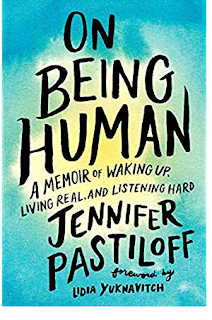
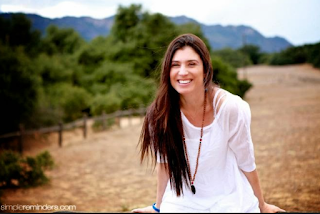
Hi everyone. You know how important pre-orders are right? So I'm here telling you that you need to pre-order Jennifer Pastiloff's memoir. RIGHT NOW. Not just because of sales and attention--but because this memoir turned me inside out and I believe it might do the same for you. I was crying. I was underlining phrases. I was being changed with every line. It's really the story of a woman who thought she was nothing, and she became everything to so many people. She has a hearing loss, so she listens even more fiercely to everything and everyone.
Jen changed my life. She was the one who urged me to write about my mom's dementia, my mom's dying, the time when I almost had to make a choice about an abortion, and most importantly, she got me to admit that I, too, have wonky hearing, and claiming it just made everything easier and better. She's my heroine, and I am completely blissed out to claim her as my friend.
Here's the details:
Jennifer Pastiloff, Beauty Hunter, is a public speaker who travels the world with her unique workshop: The Manifestation Workshop: On Being Human-a hybrid of yoga, writing, sharing out loud, and occasionally a dance party. has been featured on Good Morning America, New York Magazine, CBS News and more for her unique style of teaching. She’s developed a massive and loyal following from her personal essays. She also is co-editor of the magnificent online journal THE MANIFEST-STATION.
Check out Retreats for all retreat listings and Workshops to attend one in a citynear you.
She tweets/instagrams at @jenpastiloff.
And here's the incredible interview Jen gave me. And P.S. Jen, I've got you. I've always got you,
I’ve commented that what is so revolutionary about your moving memoir is that even though it most definitely is YOUR story, it feels like it’s all our stories—all of us who have felt we were not pretty enough, or smart enough, or lovable enough. Can you talk about this please?
The through line I see the most in the work I do is the pervasive belief of “I am not enough.” I have been in workshops, rooms with eight-year-olds all the way up to women in their seventies, and a lot of them were saying the same things: I am afraid of what others think, I am not pretty enough, I am not enough. To feel less alone in our struggles is key to surviving. When we start to listen to each other, we realize that so many of us share the same Inner Assholes. One of the ways to quiet the IA is to talk about it and conquer it together. My IA is still alive and well but it’s quieter (some days) than it used to be.
You know that feeling you get when you hear someone speak, or read something, and you think, “Oh my God, that could be me talking?” We need more of that. Honest, un-curated, unashamed truths about who we are so that we can see that the idea of perfection is a MYTH. That we all have been striving for something non-existent. I do think that listening is the key. Fierce listening, or hard listening, to one another. So often we deal with the same feelings- different details, of course- but the same core feelings of shame or not-enoughness or pain. When we realize that we aren’t the only one, it’s like a big exhale. This is why the #metoo movement is so powerful. It’s the same idea. Me too.
What kind of writer are you? Did you know how this memoir was going to unfold or were you stunned and surprised?
One thing I talk about in my book are Bullshit Stories, as you know, so if my Inner Asshole (IA) were to answer this question, it would say: I am not a real writer. But I know that isn’t true, that it is indeed a Bullshit Story
I don’t know what kind of writer I am. I started writing stories as a little girl. At NYU, I found poetry, and that really was my first great love. Still is even though I don’t write it much anymore. I am a writer who writes in bed, or on the couch (which is also a sofa bed) as her son and husband sleep (as I am doing right now), or in the car, or who doesn’t write for days, weeks, months. I am a writer who uses social media to write. I am a writer who has no “system.” I am a writer who writes some beautiful things and who also has written some godawful terrible sentences. I have found through this process of selling and writing a book, or rather, through my entire life, that there is no one right way. I can tell you that I do not take myself too seriously, or at least I try not to. Since I dropped out of NYU, I have always thought of myself as a failure. Since I taught yoga and got sort of “famous” for that, I was afraid I would be thought of as a joke, as some kind of woo-woo person, since I share a whole lot of intimate stuff on social media, I thought I wasn’t a “real writer” but I guess, in truth, the answer is: I sold a book. I have a book coming out into the world so whatever “kind” of writer I am, I did it. There is not one right way.There is only the way that YOU do it.
What I also found revolutionary is the way you took what helped you and turned it into these stupefyingly successful yoga/writing workshops all over the world. How come yoga lends itself to all of this so well?
We store so much in the body. Everything, really. The idea I had was to get to a vulnerability that occurred when the body wasn’t in fight or flight mode. I wrote a poem years ago where I said “Do Yoga. Let everyone you’ve stored in your muscles out, every so often, to breathe.” I do think it’s like that- we keep things inside of us to any chance to move shit around is good. Having said that, I have people who have never done yoga, people in wheelchairs, people who come and just sit. The idea is to embrace the body rather than deny it.
As someone who has spent the majority of my life trying to NOT be in my body, it felt like my life opened up when I stopped trying to run away from it. Be it yoga, or dance, or just swinging your arms, or simply breathing- I believe that when we connect to the what our body is saying, it’s easier to drown our IA (Inner Asshole) out. The body tells the truth.
I also have noticed that the more fatigued we get, the harder it is to keep our guards up. Sometimes, after a really long travel day, I cry. I have no idea what’s wrong, or why I am so weepy, until I go, “Oh yea, I am just really fucking tired.” I want to get us to that place in my workshop where our armor is off without having to have a really long travel day or being up for 24 hours straight. By using movement, it allows us to soften. I don’t care about the yoga part. That was a way in. A lot of times we just dance or sing or laugh. The idea is to not escape. I have always been an escape artist (anorexic, over exercising, binging, sleeping) so to just be with what’s happening in my body- that feels revolutionary. As Lidia Yuknavitch always says, your body has a point of view. I have found no greater truth. I am finally learning to listen.
Every time I finish writing a book, I feel as if I’ve somehow rewritten myself, that I’ve changed. How did this memoir change you?
In many ways, I feel like it is the first time I really grieved for my father. Can you believe that? He died so many years ago, when I was a little girl, but I locked it inside of me and shut down. Writing this book opened me up in a way I thought was impossible. I thought the grief was too old that healing could never take happen. And yet, it did. I am not suggesting that we ever get over losing someone or that I am “fixed” or “healed” but I allowed myself to feel things I never had for fear they would kill me. They did not kill me. I did not look away- which is the main tenet in my workshop- Don’t look away. To do that for yourself is life-changing. I looked at all of it- the beautiful and the hideous parts.
This is kind of embarrassing to admit but I also felt like an adult for the first time in my life. Even though I have a two-year-old, getting this book done made me battle some demons (the lack of planning, living in chaos etc) because I signed a contract and I had to get it done. It was one of the first time in my life, ugh, I hate admitting this, that I saw something to completion. It has given me a confidence and a sense of possibility now, though. I can do things. I can do what I thought I couldn’t. I try and remember that when I get caught up listening to my IA telling me all sorts of lies as to what a bad and lazy human I am.
This book also changed me because I found compassion for my mom. Everyone has a complicated life, everyone has stuff with their parents or their family, but writing this book gave me insight and I was able to finally see my mother as a human being who was doing the best she could. When you experience trauma as a child, as I did, it’s hard to not get stuck in the belief system from that time. The process of writing the book helped me rewire my belief system and also get to know my mother better.
My father-in-law died a quick and painful death from pancreatic cancer as I was writing it, which cracked me open and also forced me to revisit my father’s death, in a new light.
One of the things I talk about so much is not being an asshole. Don’t be an asshole, I always say. Writing the book made me realize I am still an asshole sometimes, but that I do my best and I am doing pretty good. I took a good hard long look at myself and I liked myself, which is a new feeling. The idea of embracing being human is largely based upon realizing that we are all assholes. Sometimes. And when we don’t look away, when we bear witness, when we tell the truth and listen, life becomes more bearable. I guess I did that with myself in writing this book, so whadya know? I also learned that I am an asshole who drinks too much coffee. (Approx 789990 cups during the process of writing On Being Human.)
What’s obsessing you now and why?
Releasing attachment to the outcome. Are people going to buy it? What if I said too much? Can I take it back? Am I too exposed? Are people going to help me the way I help others? Living in a one-bedroom with three bodies. My nephew’s constant starvation that he has from Prader Willi Syndrome. The state of our fucking country. If people are going to vote. Dying and leaving my son. My mom dying. The toilet paper Trump had on his shoe as he boarded Air Force One the other day. The fact that my coffee cup is empty- be right back.
Published on October 09, 2018 16:32
Jodi Picoult talks about her provocative, heart-slamming, crucially important novel about an abortion clinic, ordinary lives, a shooting.
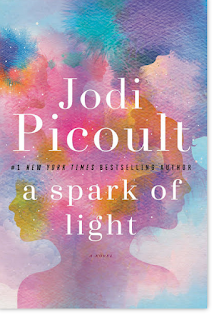
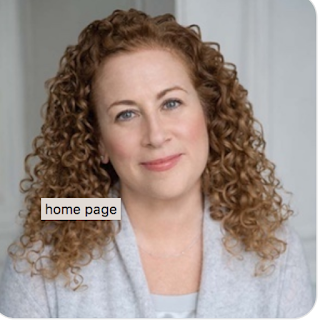
"Picoult writes with unassuming brilliance." Stephen King."Picoult at her fearless best." Washington Post
One of the most polarizing things in American politics right now is abortion rights. And #1 New York Times Bestselling author Jodi Picoult has a lot to say about it, in a novel that is as brave as it is thought provoking. Read it. Make your friends read it. Novels build empathy, change minds, and we need this more than ever. A Spark of Light follows a group of people during a shooting at an abortion clinic. Think you know the story? Think again.
I cannot thank Jodi enough for being here to talk about this.
You are the bravest writer I know. You’ve managed to make an abortion clinic shooting the topic of what I think is one of your most nuanced novels ever. What made you feel that now was the time to write about such a hot button topic? (And I’m so glad that you did.)
JP: When I was in college, a friend got pregnant and after many conversations and teary nights, decided to have an abortion. I supported her 100%. She was 7 weeks pregnant at the time. Years later, I was seven weeks pregnant with my third child when I had complications and was told I might lose the pregnancy. I was devastated - to me, that was already a child. How we feel about reproductive rights changes, not just whether we define ourselves as pro-life or pro-choice, but for an individual woman over the course of her own lifetime. What a woman feels is right at 16 might not be what she feels at 30 or at 43. Laws are black and white, but women are a thousand shades of gray - which is what makes legislating reproductive rights problematic. THAT was what made me want to write about this now, when Roe vs. Wade is under tremendous threat.
But this novel is also about guns, as well as abortion. Do you think we will ever find a solution to using violence to getting our ideas across (or stopping others from exercising their right to think differently?)
JP: Not unless we pass common sense gun reform. You know what’s really sad? A journalist pointed out to me that this was also a gun reform book…and it had NEVER CROSSED MY MIND. I was wrapped up in the reproductive rights issues and just took violence at a clinic as the norm.
First, what startled you the most about your research?
JP: Three things. First, that when people talk about defunding Planned Parenthood, they are assuming that will stop abortions. In reality, 97% of the work PP does has nothing to do with abortion: health care for women, cancer screenings, STD screenings, birth control. That 97% of care is federally funded. What is NOT federally funded is the other 3% -- abortions. If you go to a Planned Parenthood for your abortion, you pay for it. So what that means is that if we defund Planned Parenthood, all that federal money will be taken away – and women’s health care suffers. The only thing that Planned Parenthood will be able to do – the only care that supports itself monetarily – is abortion. Which of course those who want to defund Planned Parenthood don’t realize. Second – that those who are pro-life are not religious zealots, but people who I would be friends with and have over for dinner. They too come from a place of deep conviction and compassion. They don’t consider themselves to be anti-woman – but they truly believe life begins at conception and can’t figure out a way to reconcile that fact with the practice of abortion. Third – of the 151 women I interviewed who had had an abortion, less than 25 wanted to be acknowledged in the book and the vast majority of those wanted to use a pseudonym or initials or be anonymous because they had never told their parents, partners, kids, employers, etc. about their abortion. That made me so sad. Women live under an umbrella of stigma about abortion. When women don’t tell their stories, men write the narrative for us, and it’s one of blame and shame. One out of four women will have an abortion in her lifetime, and I hope that this book might encourage them to tell their stories – because that’s what normalizes abortion, and makes another woman strong enough to tell HER story. Women matter. Women’s lives matter. Women’s stories matter.
Secondly, I’m wondering, because I know your research is just incredible, if you’ve found the way to convince anti-abortion people and pro-life advocates that the answer is not to do away with abortions, but perhaps it is to have mandatory sex education in the schools early on, and free contraceptives (without needing parental approval) and funding and programs in place to help women who get pregnant and cannot possibly care for a child or don’t want one?
JP: That’s definitely one way to come together on reproductive rights – we can all agree that no one ever WANTS to get an abortion. With that in mind, how can we reduce the abortion rate without even mentioning the words Roe v Wade? Well, let’s start with sex ed and contraception – that’s clearly the easiest way to reduce the abortion rate, has been proven to reduce the rate globally many times over, and yet those who are pro-life are often also anti-contraception. But suddenly that argument has less to do with “saving a life” than “controlling women’s sexuality” – and I find that terribly problematic and misogynistic. The other thing we should talk about are all the laws that AREN’T Roe v Wade that would actually help women and could reduce the abortion rate. Knowing that 75% of women cite economic reasons for an abortion – what if we raised the minimum wage? Had universal health care to cover maternity care AND the life of the child? Had federally funded day care? Penalized companies that don’t promote women because they keep leaving the work force to have babies? How come no one ever talks about these ways to reduce the number of abortions?
I absolutely love the cover. Can you talk about it?
JP: It’s actually the second cover – I didn’t like the first because it was too similar to Small Great Things, but this one was a hit out of the ballpark. I love the hidden faces in the watercolors.
What’s obsessing you now and why?
JP: The Re-Osirian union in Ancient Egypt, which has a lot to do with the next book…and also what it means to die well (also for the next book). And The Book Thief, because I am the co-librettist for a musical version, and we have a reading coming up in a few weeks.
What question didn’t I ask that I should have?
JP: How do you pack for six weeks on tour in a suitcase? And if you get that answer, can you send it to me?
<!-- /* Font Definitions */ @font-face {font-family:<span class="goog-spellcheck-word" style="background: yellow none repeat scroll 0% 0%;" id=":dg.73" tabindex="-1" role="menuitem" aria-haspopup="true">Cambria</span>; <span class="goog-spellcheck-word" style="background: yellow none repeat scroll 0% 0%;" id=":dg.74" tabindex="-1" role="menuitem" aria-haspopup="true">panose</span>-1:2 4 5 3 5 4 6 3 2 4; <span class="goog-spellcheck-word" style="background: yellow none repeat scroll 0% 0%;" id=":dg.83" tabindex="-1" role="menuitem" aria-haspopup="true">mso</span>-font-<span class="goog-spellcheck-word" style="background: yellow none repeat scroll 0% 0%;" id=":dg.85" tabindex="-1" role="menuitem" aria-haspopup="true">charset</span>:0; <span class="goog-spellcheck-word" style="background: yellow none repeat scroll 0% 0%;" id=":dg.87" tabindex="-1" role="menuitem" aria-haspopup="true">mso</span>-generic-font-family:auto; <span class="goog-spellcheck-word" style="background: yellow none repeat scroll 0% 0%;" id=":dg.92" tabindex="-1" role="menuitem" aria-haspopup="true">mso</span>-font-pitch:variable; <span class="goog-spellcheck-word" style="background: yellow none repeat scroll 0% 0%;" id=":dg.96" tabindex="-1" role="menuitem" aria-haspopup="true">mso</span>-font-signature:3 0 0 0 1 0;} /* Style Definitions */ p.<span class="goog-spellcheck-word" style="background: yellow none repeat scroll 0% 0%;" id=":dg.106" tabindex="-1" role="menuitem" aria-haspopup="true">MsoNormal</span>, <span class="goog-spellcheck-word" style="background: yellow none repeat scroll 0% 0%;" id=":dg.107" tabindex="-1" role="menuitem" aria-haspopup="true">li</span>.<span class="goog-spellcheck-word" style="background: yellow none repeat scroll 0% 0%;" id=":dg.108" tabindex="-1" role="menuitem" aria-haspopup="true">MsoNormal</span>, div.<span class="goog-spellcheck-word" style="background: yellow none repeat scroll 0% 0%;" id=":dg.110" tabindex="-1" role="menuitem" aria-haspopup="true">MsoNormal</span> {<span class="goog-spellcheck-word" style="background: yellow none repeat scroll 0% 0%;" id=":dg.111" tabindex="-1" role="menuitem" aria-haspopup="true">mso</span>-style-parent:""; margin:0in; margin-bottom:.0001pt; <span class="goog-spellcheck-word" style="background: yellow none repeat scroll 0% 0%;" id=":dg.119" tabindex="-1" role="menuitem" aria-haspopup="true">mso</span>-pagination:widow-orphan; font-size:12.0pt; font-family:"Times New Roman"; <span class="goog-spellcheck-word" style="background: yellow none repeat scroll 0% 0%;" id=":dg.130" tabindex="-1" role="menuitem" aria-haspopup="true">mso</span>-<span class="goog-spellcheck-word" style="background: yellow none repeat scroll 0% 0%;" id=":dg.131" tabindex="-1" role="menuitem" aria-haspopup="true">ascii</span>-font-family:<span class="goog-spellcheck-word" style="background: yellow none repeat scroll 0% 0%;" id=":dg.134" tabindex="-1" role="menuitem" aria-haspopup="true">Cambria</span>; <span class="goog-spellcheck-word" style="background: yellow none repeat scroll 0% 0%;" id=":dg.135" tabindex="-1" role="menuitem" aria-haspopup="true">mso</span>-<span class="goog-spellcheck-word" style="background: yellow none repeat scroll 0% 0%;" id=":dg.136" tabindex="-1" role="menuitem" aria-haspopup="true">fareast</span>-font-family:<span class="goog-spellcheck-word" style="background: yellow none repeat scroll 0% 0%;" id=":dg.139" tabindex="-1" role="menuitem" aria-haspopup="true">Cambria</span>; <span class="goog-spellcheck-word" style="background: yellow none repeat scroll 0% 0%;" id=":dg.140" tabindex="-1" role="menuitem" aria-haspopup="true">mso</span>-<span class="goog-spellcheck-word" style="background: yellow none repeat scroll 0% 0%;" id=":dg.141" tabindex="-1" role="menuitem" aria-haspopup="true">hansi</span>-font-family:<span class="goog-spellcheck-word" style="background: yellow none repeat scroll 0% 0%;" id=":dg.144" tabindex="-1" role="menuitem" aria-haspopup="true">Cambria</span>; <span class="goog-spellcheck-word" style="background: yellow none repeat scroll 0% 0%;" id=":dg.145" tabindex="-1" role="menuitem" aria-haspopup="true">mso</span>-<span class="goog-spellcheck-word" style="background: yellow none repeat scroll 0% 0%;" id=":dg.146" tabindex="-1" role="menuitem" aria-haspopup="true">bidi</span>-font-family:"Times New Roman";} @page Section1 {size:8.5in 11.0in; margin:1.0in 1.25in 1.0in 1.25in; <span class="goog-spellcheck-word" style="background: yellow none repeat scroll 0% 0%;" id=":dg.162" tabindex="-1" role="menuitem" aria-haspopup="true">mso</span>-header-margin:.5in; <span class="goog-spellcheck-word" style="background: yellow none repeat scroll 0% 0%;" id=":dg.166" tabindex="-1" role="menuitem" aria-haspopup="true">mso</span>-footer-margin:.5in; <span class="goog-spellcheck-word" style="background: yellow none repeat scroll 0% 0%;" id=":dg.170" tabindex="-1" role="menuitem" aria-haspopup="true">mso</span>-paper-source:0;} div.Section1 {page:Section1;} </style> -->
Published on October 09, 2018 10:23



